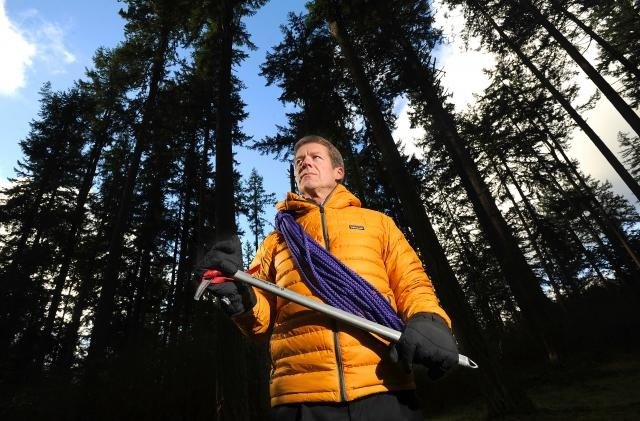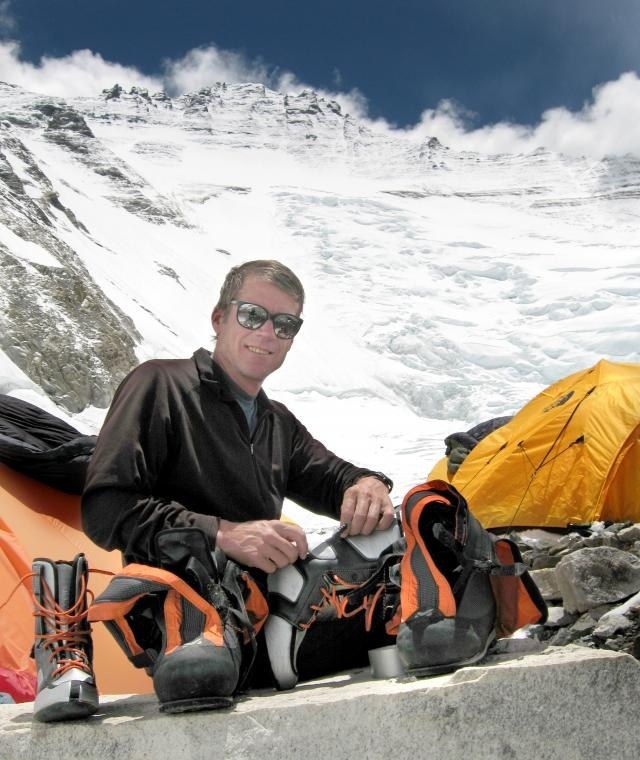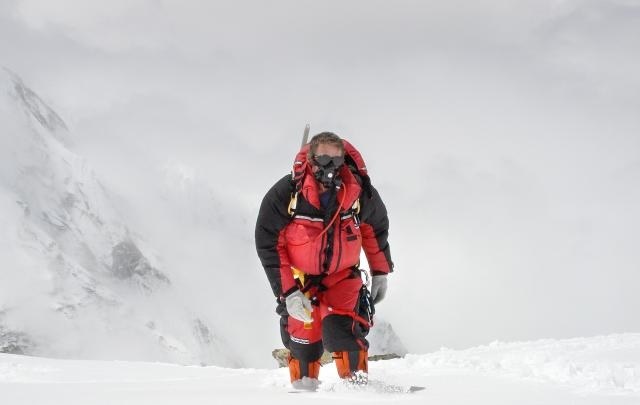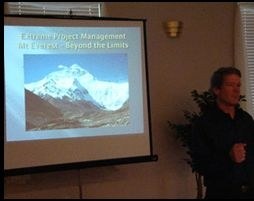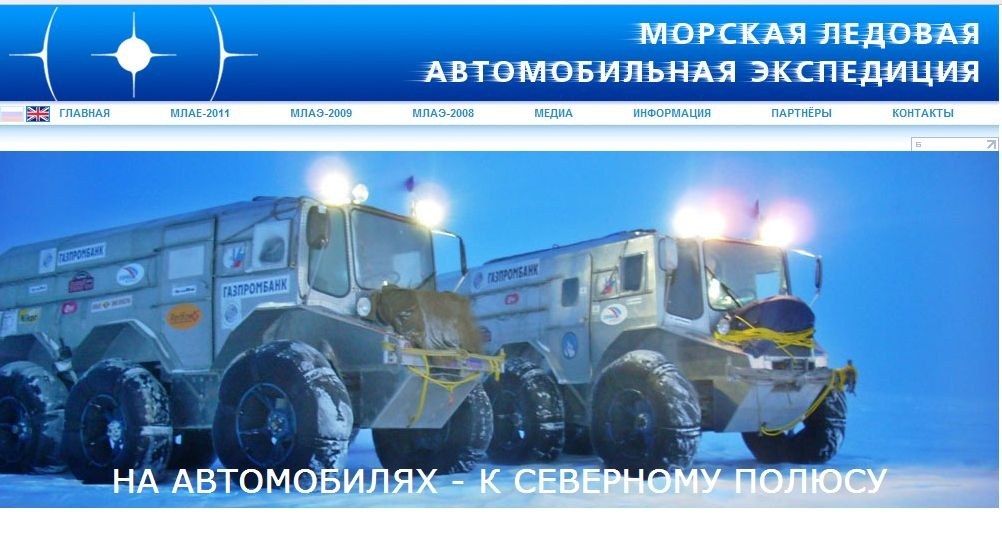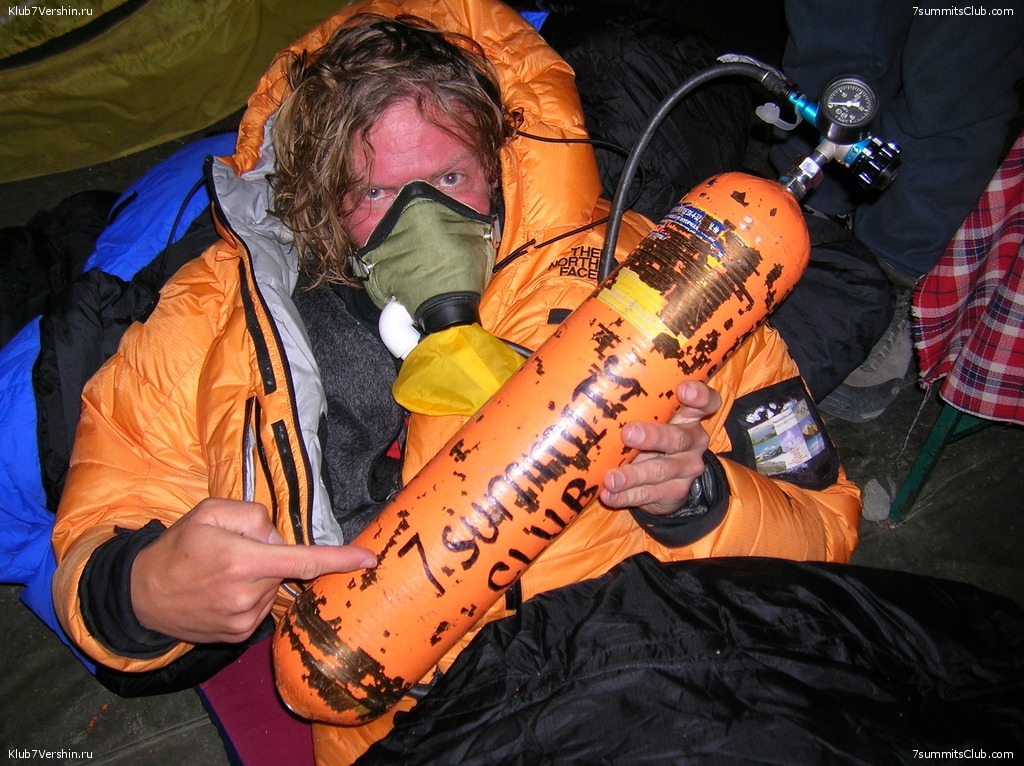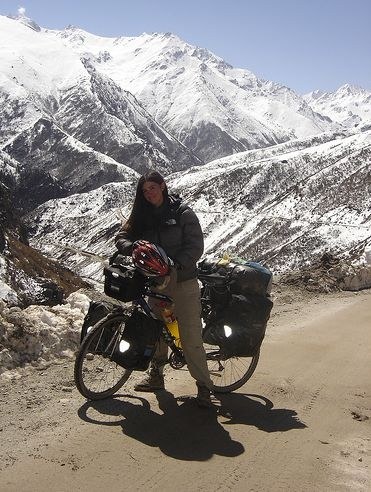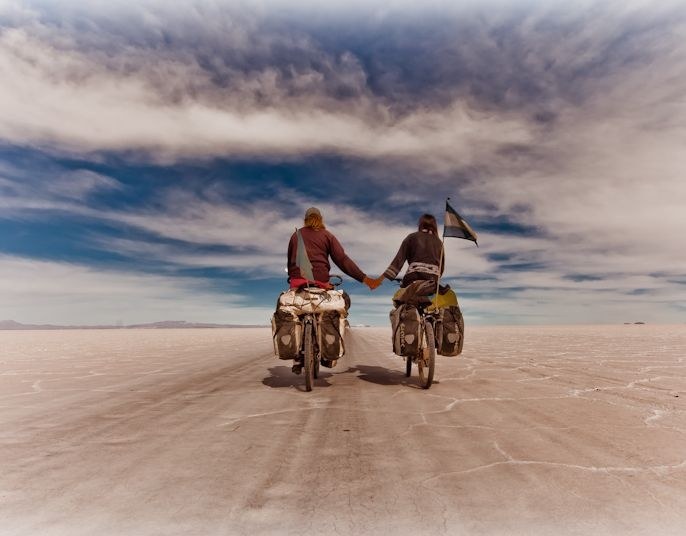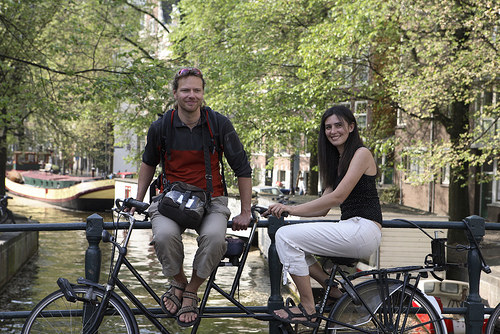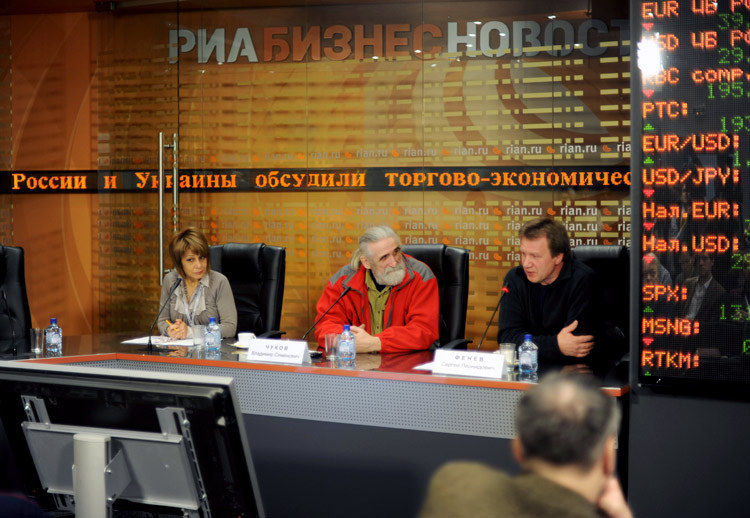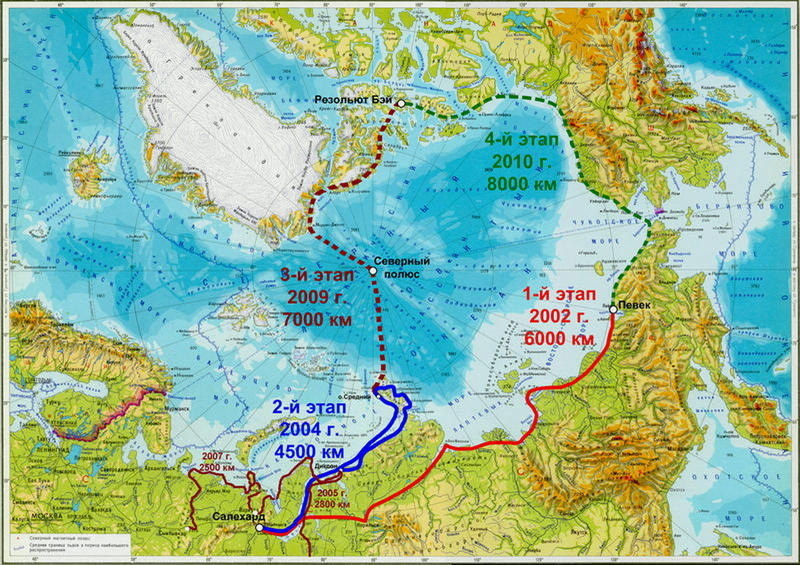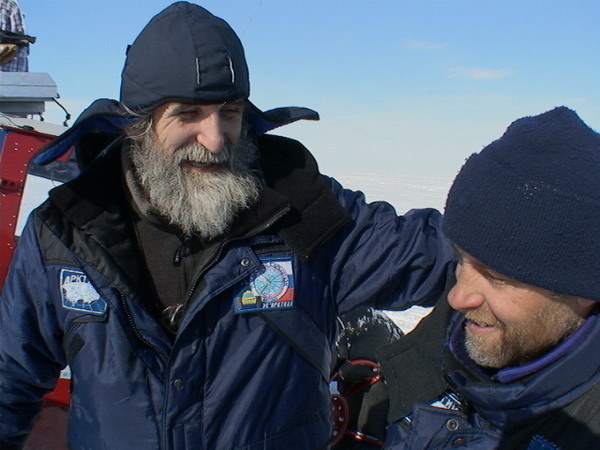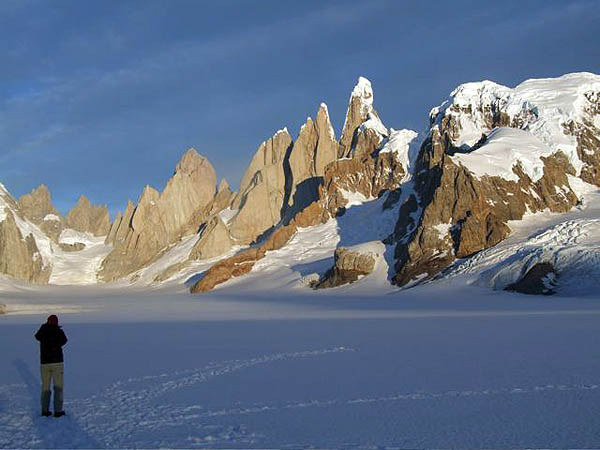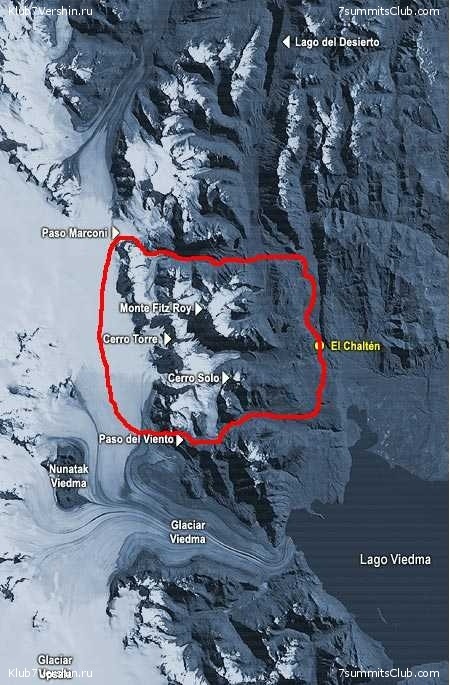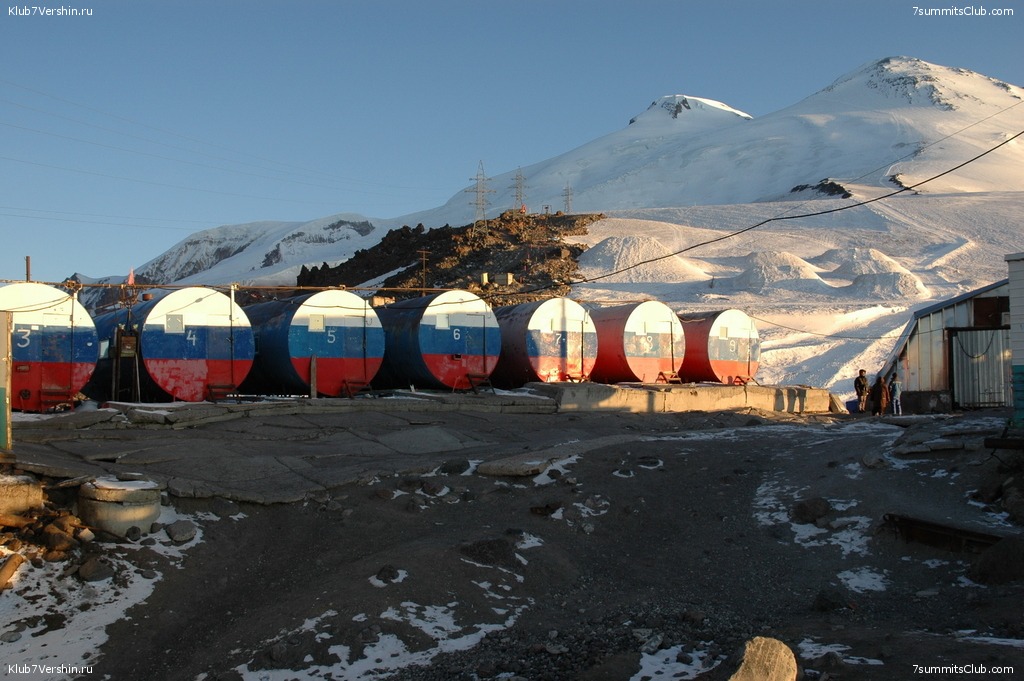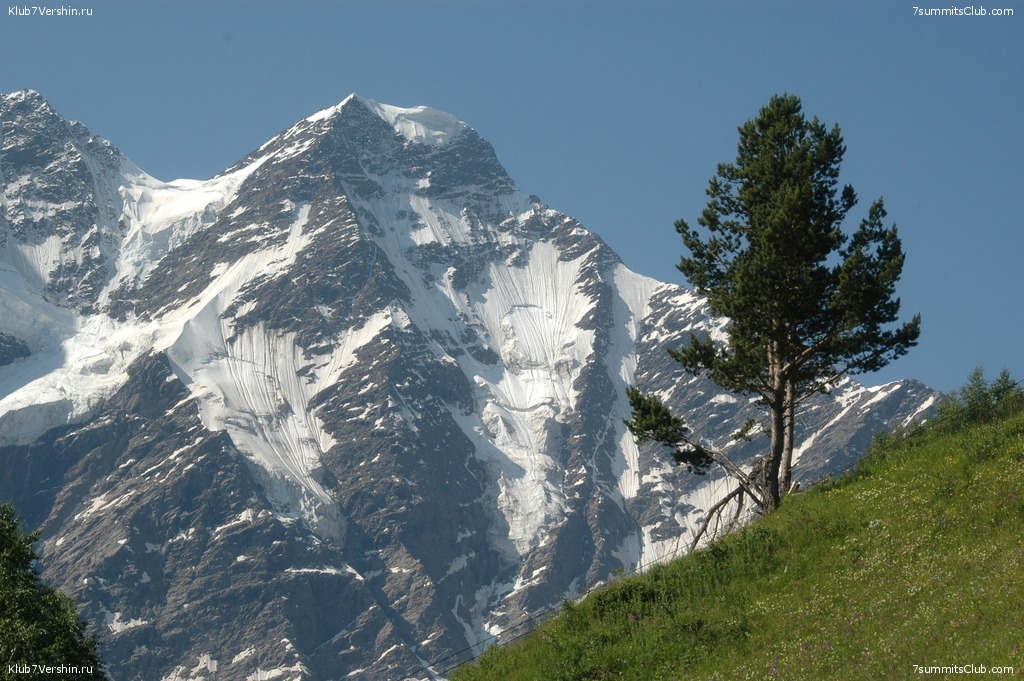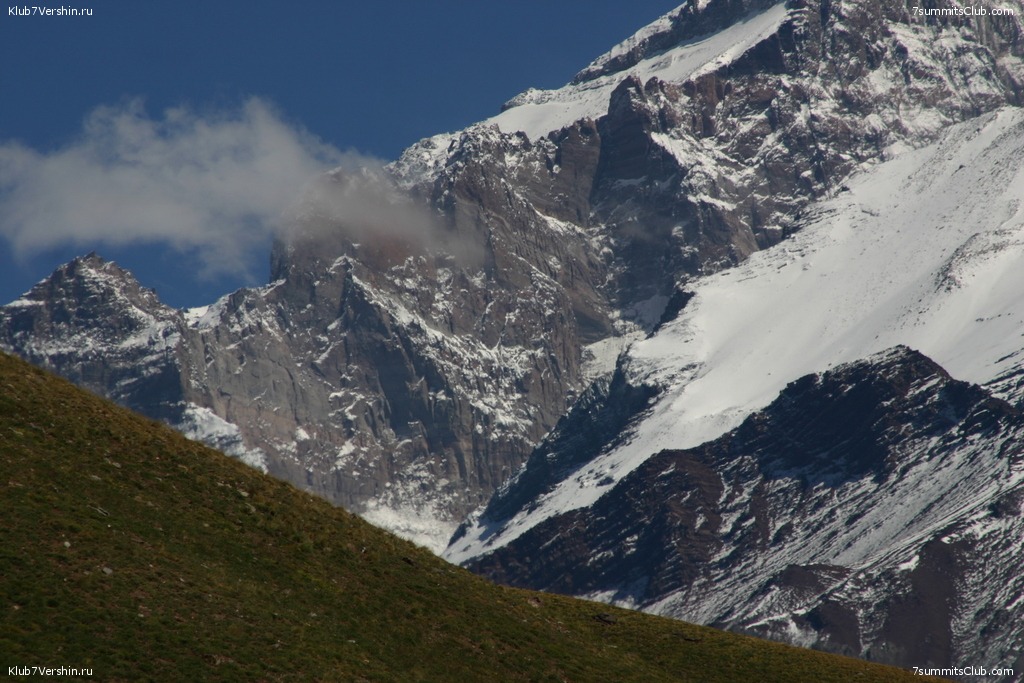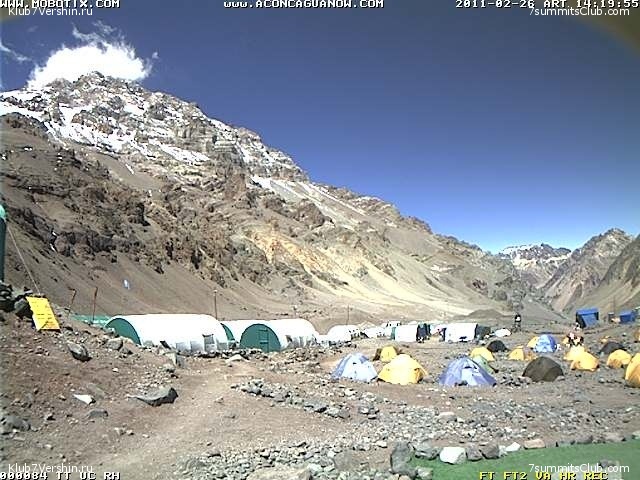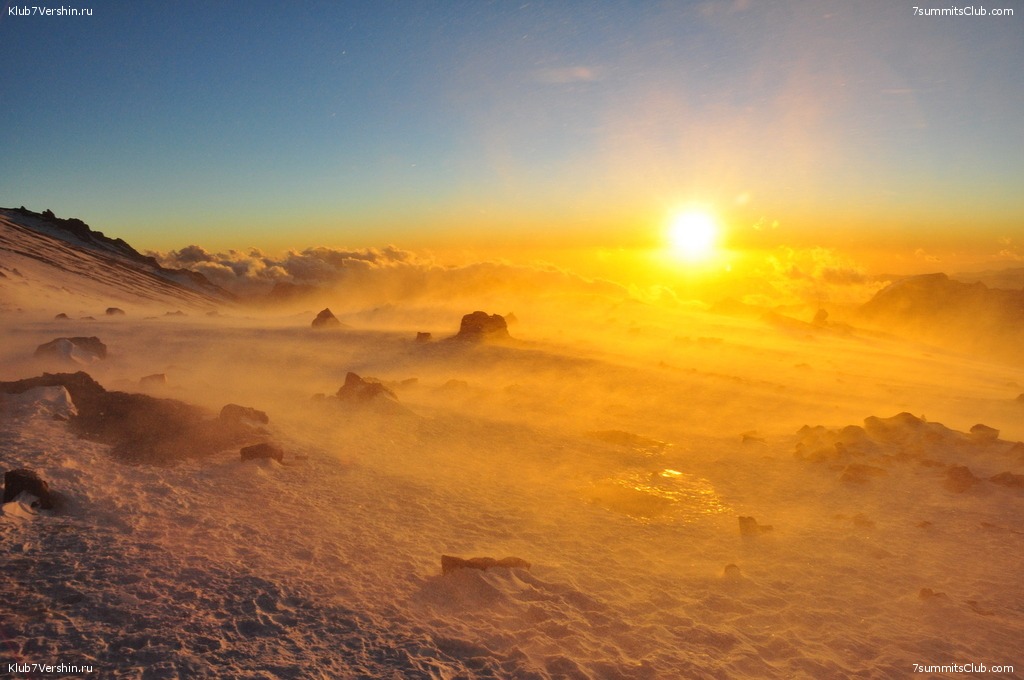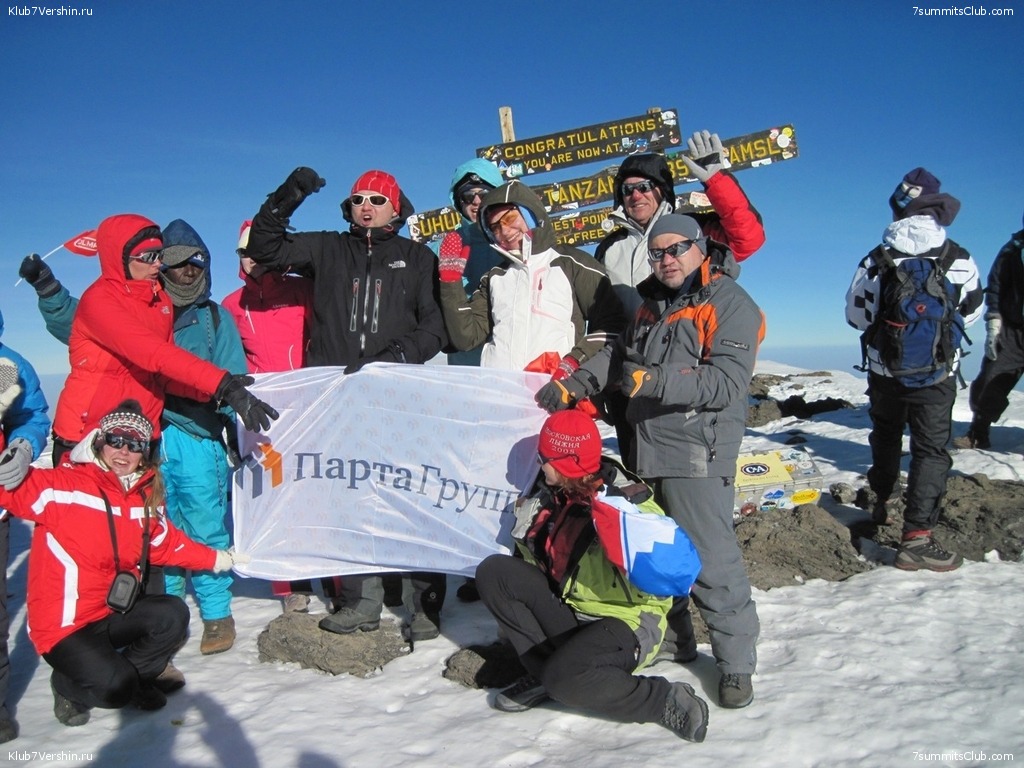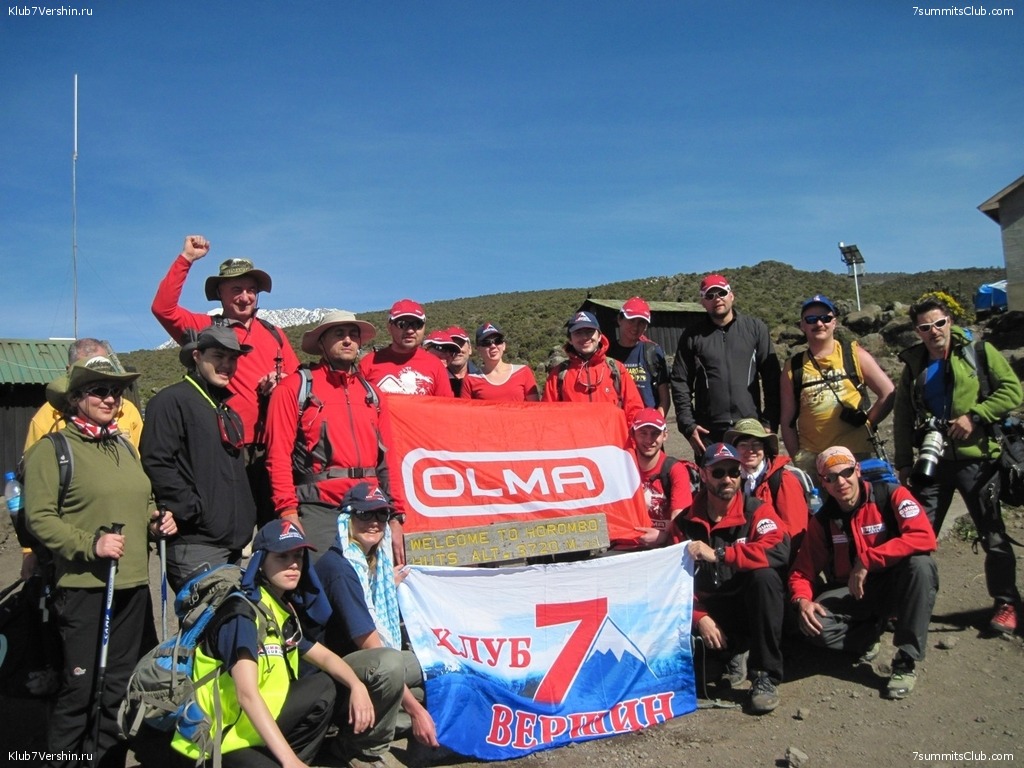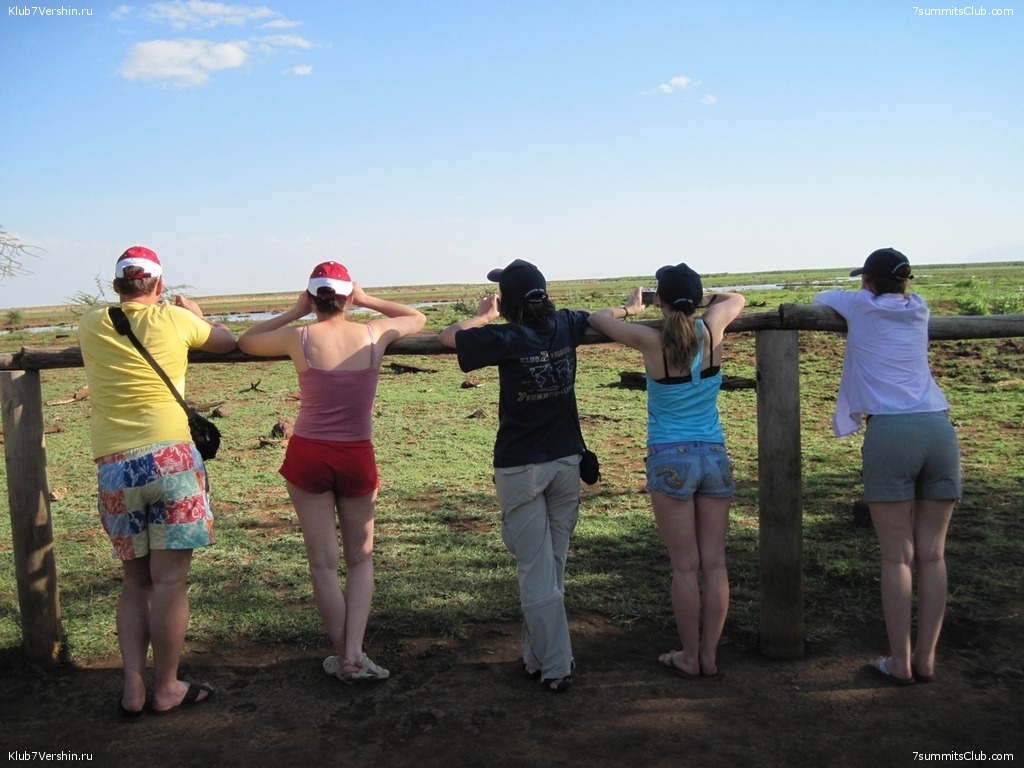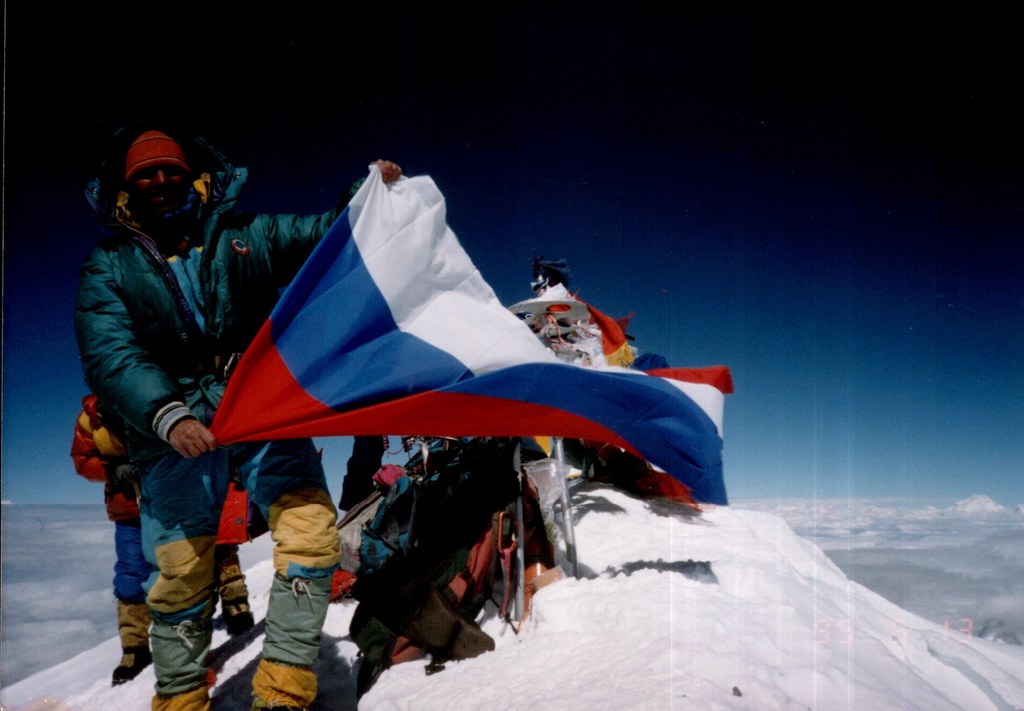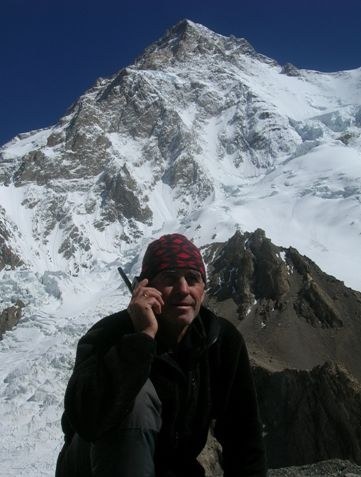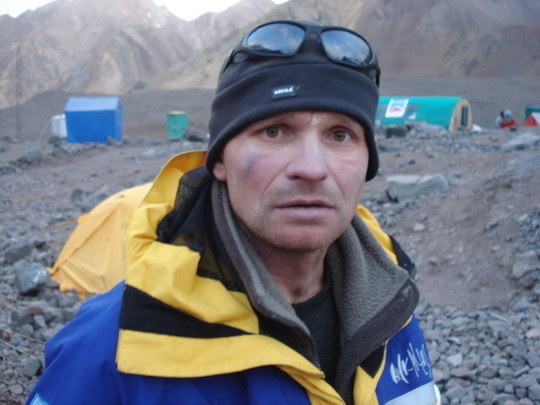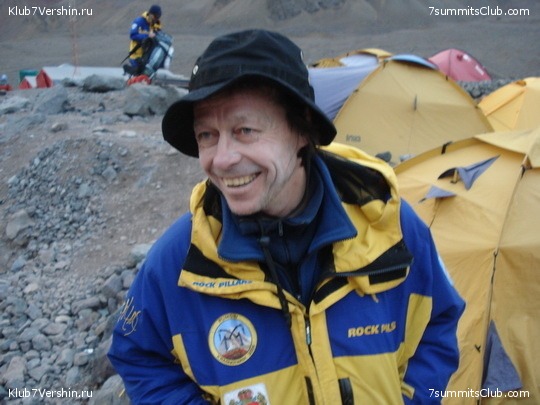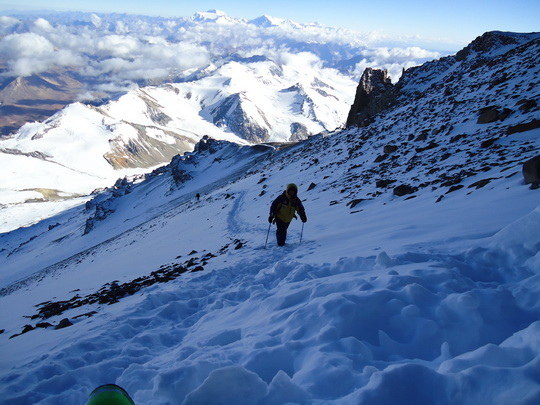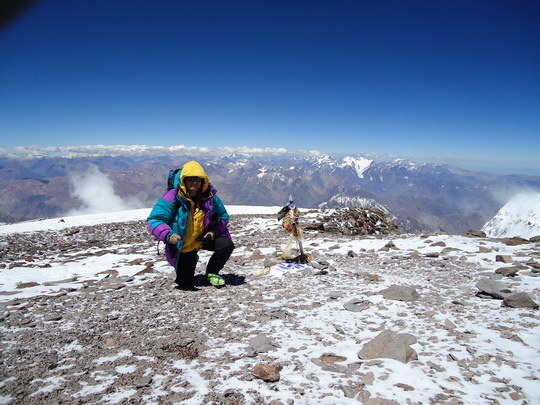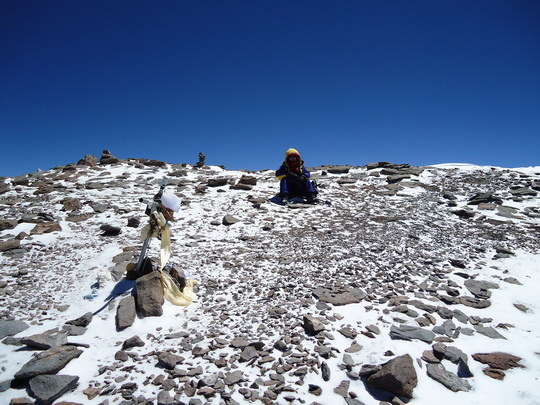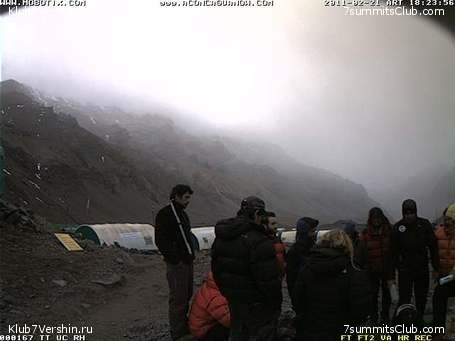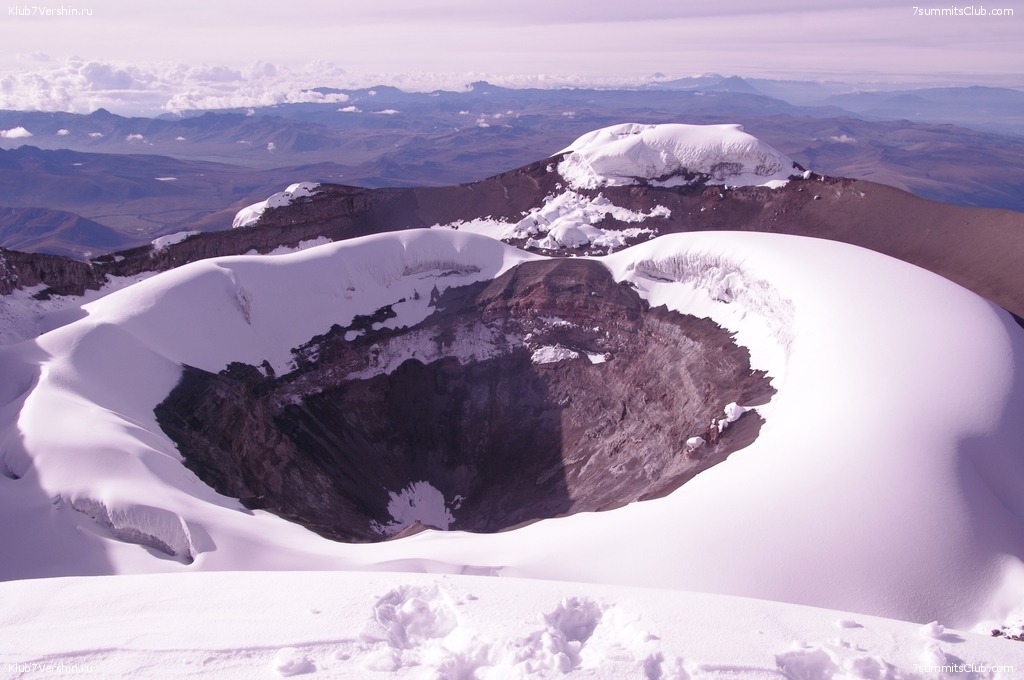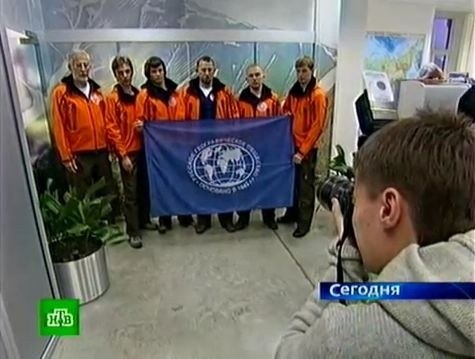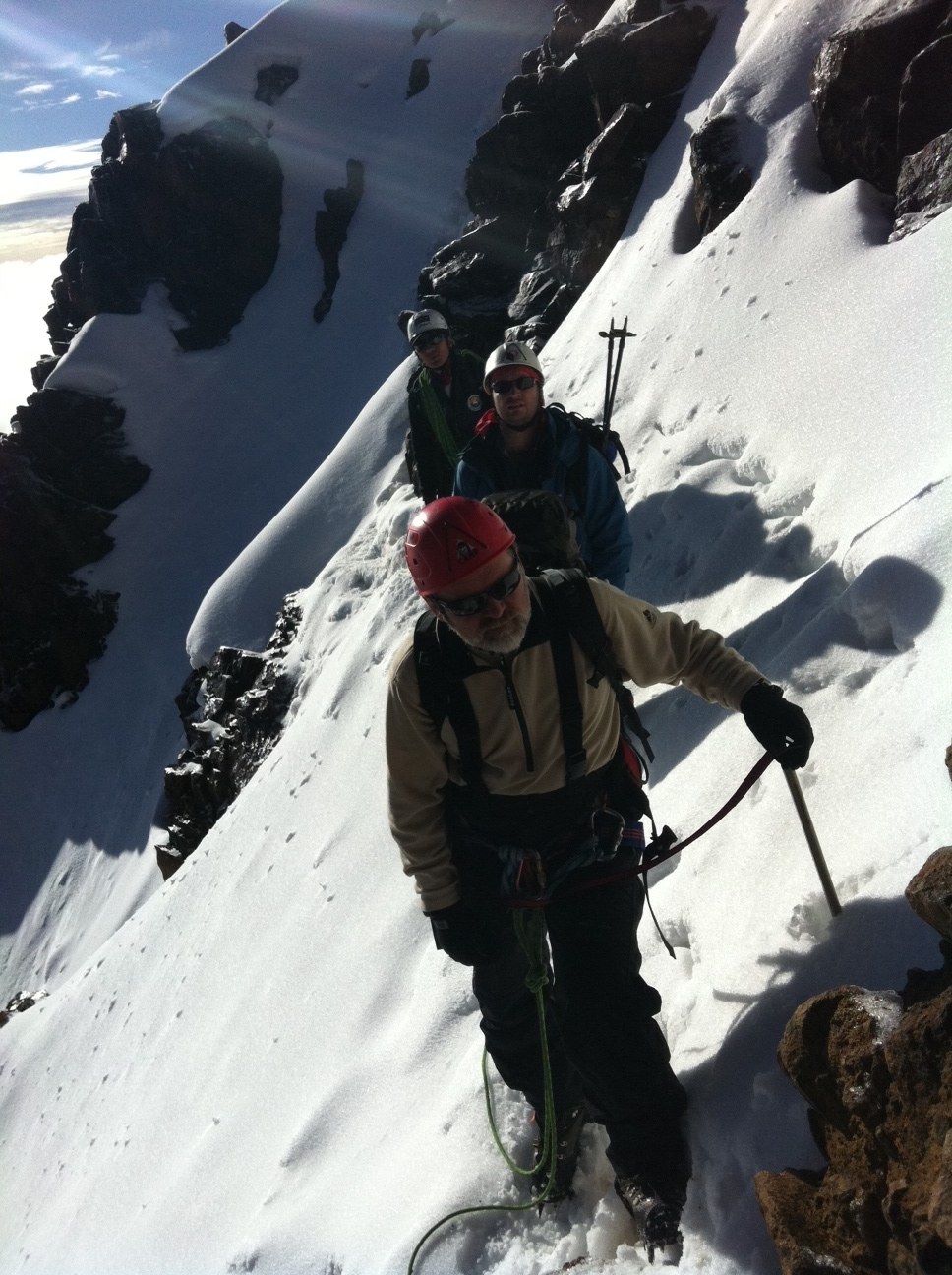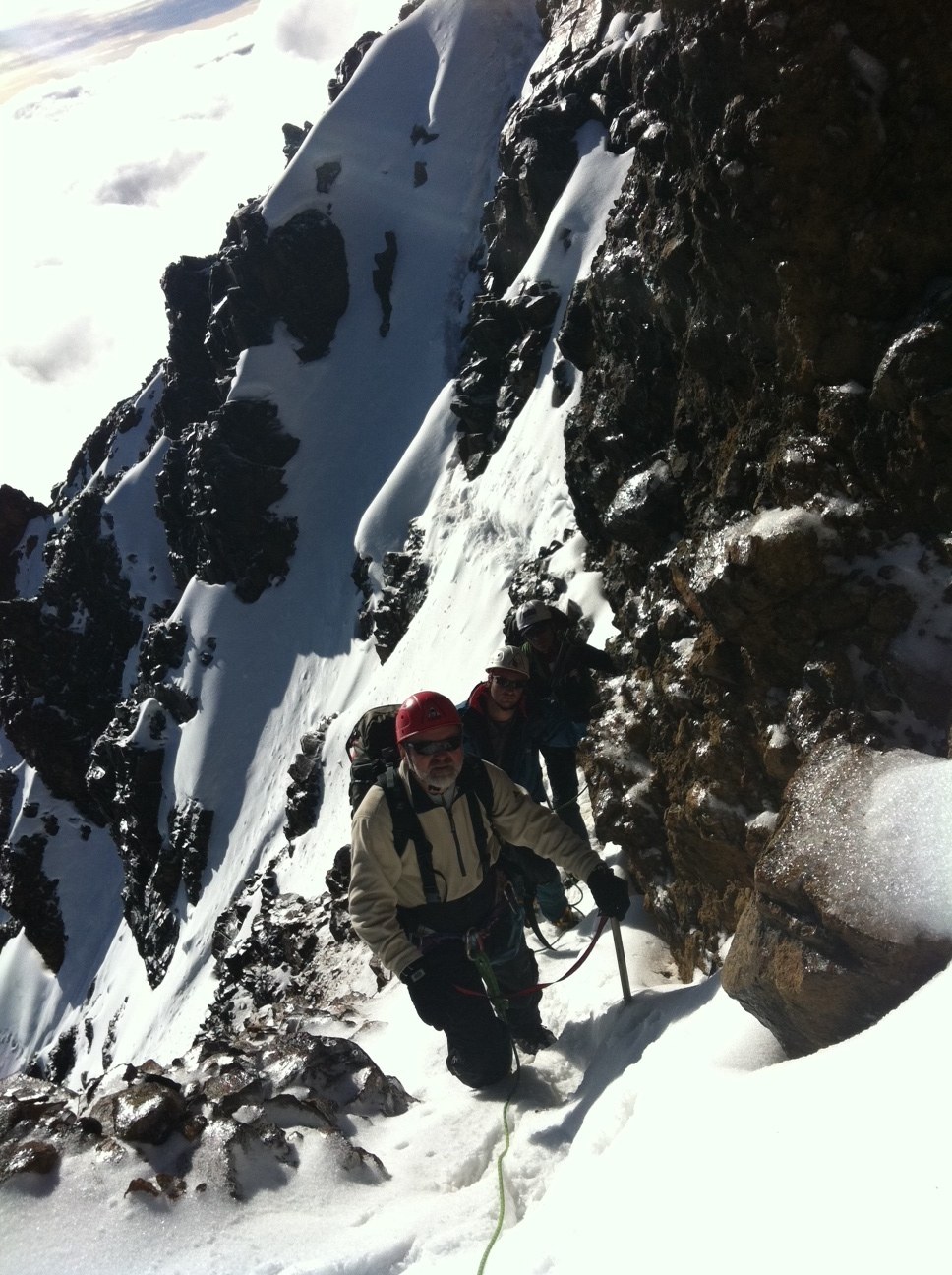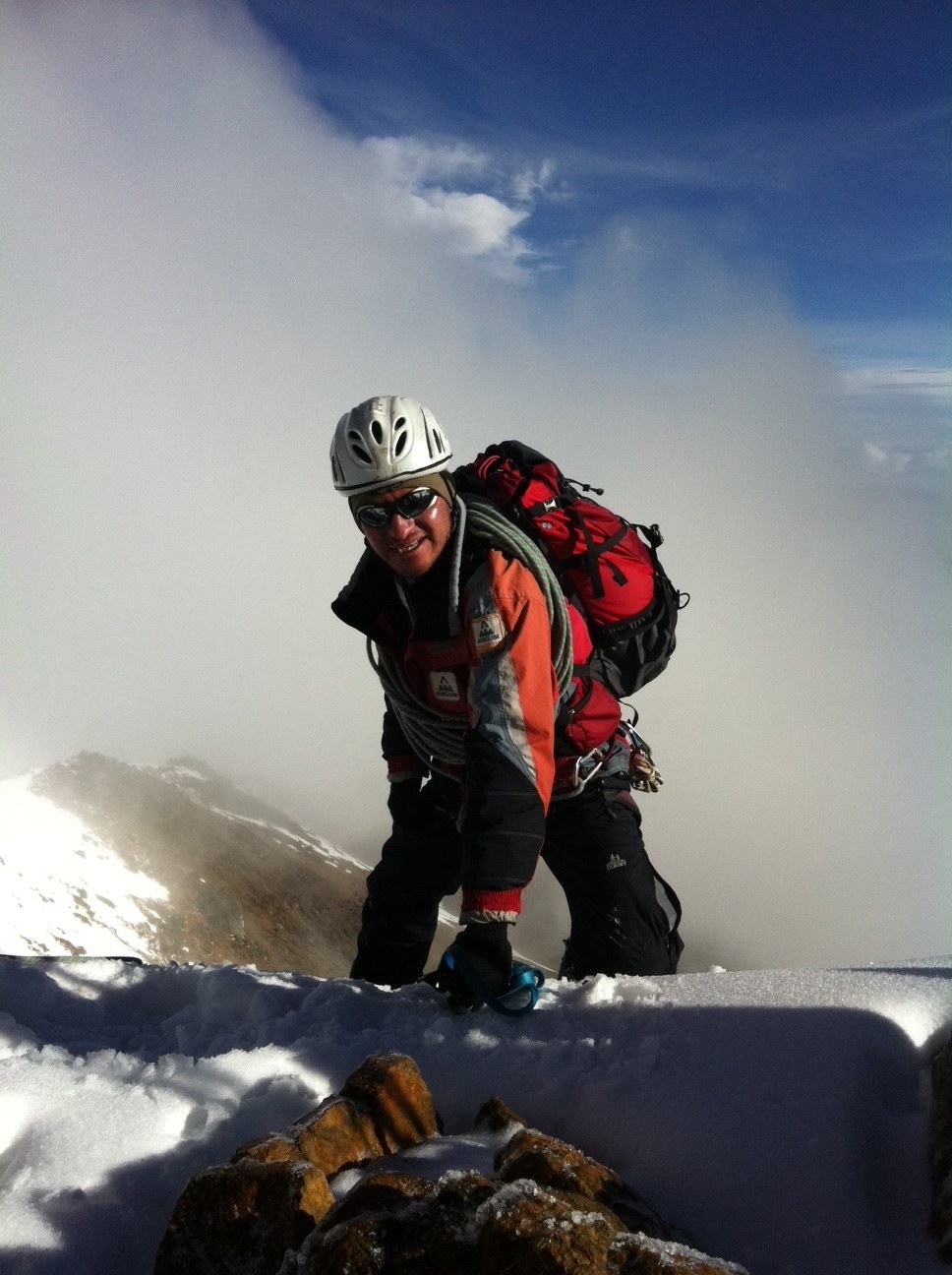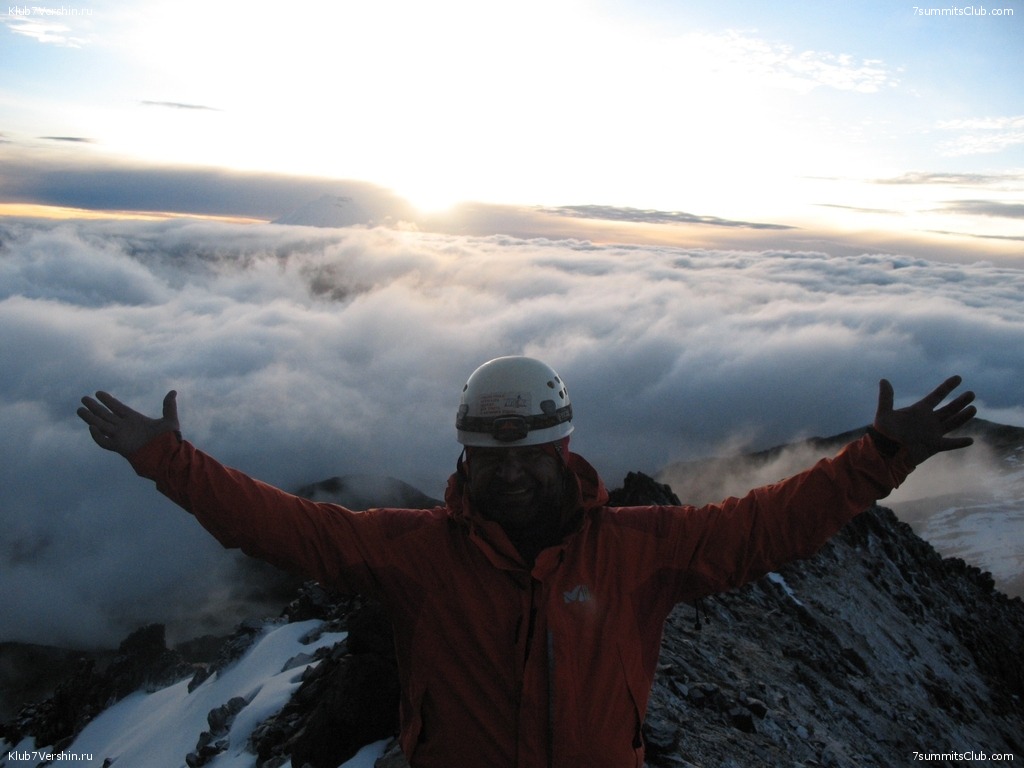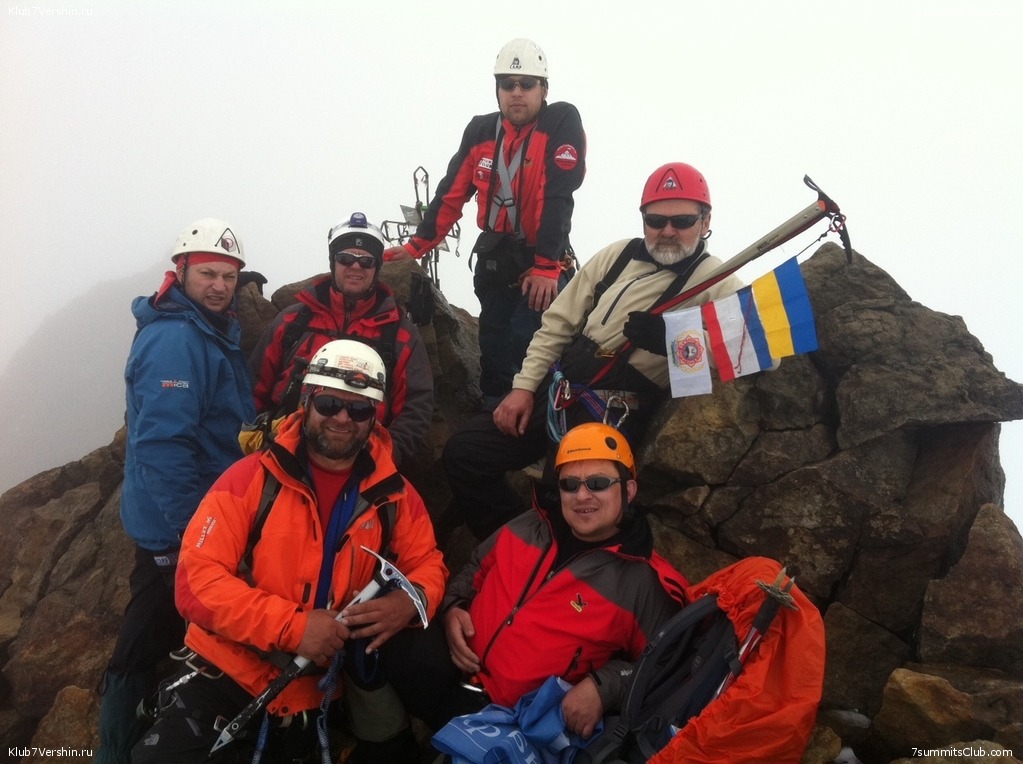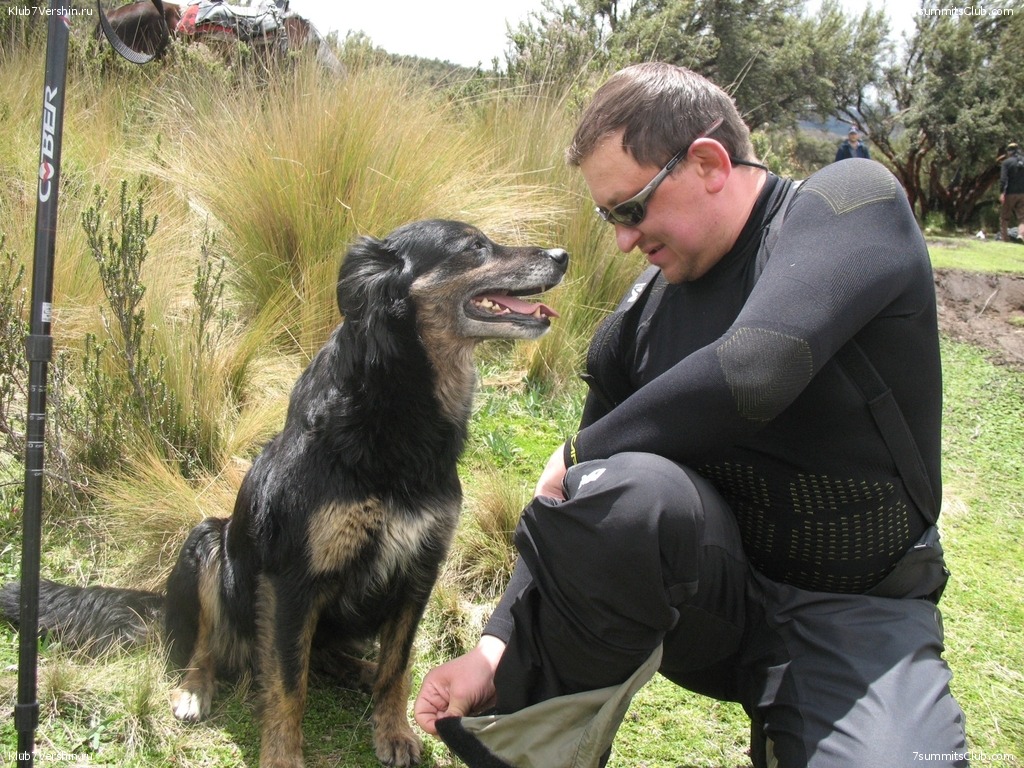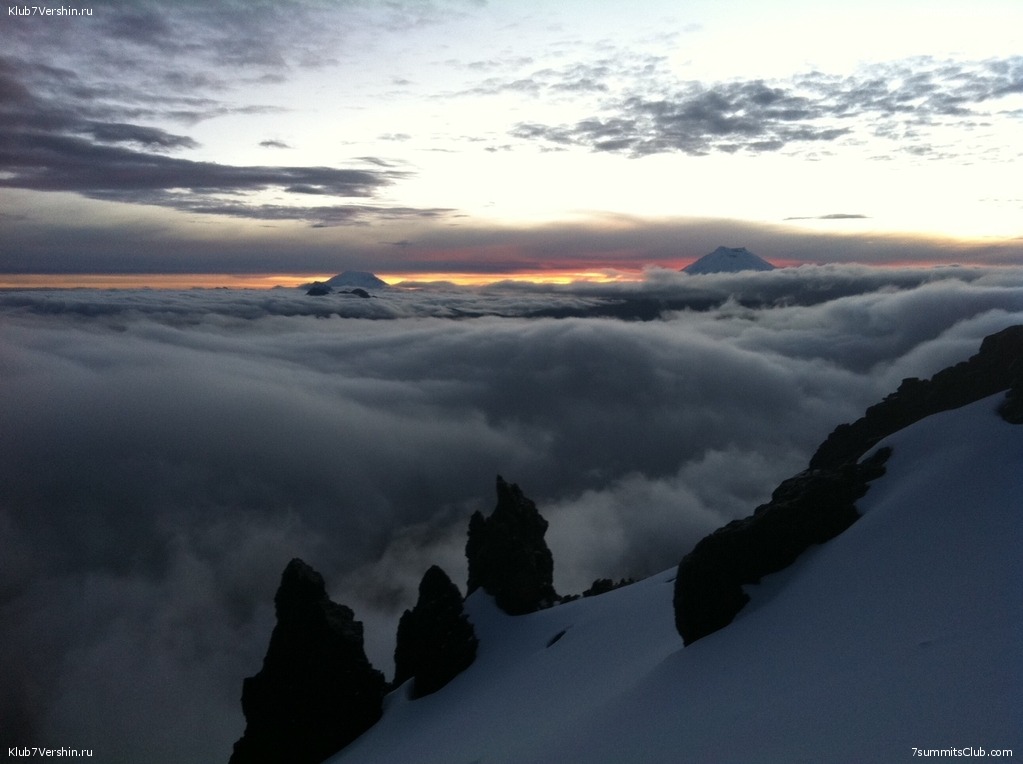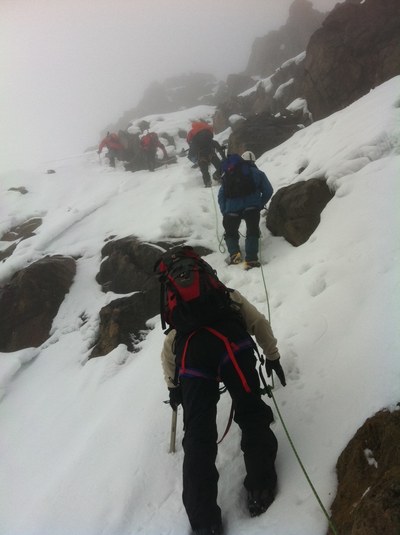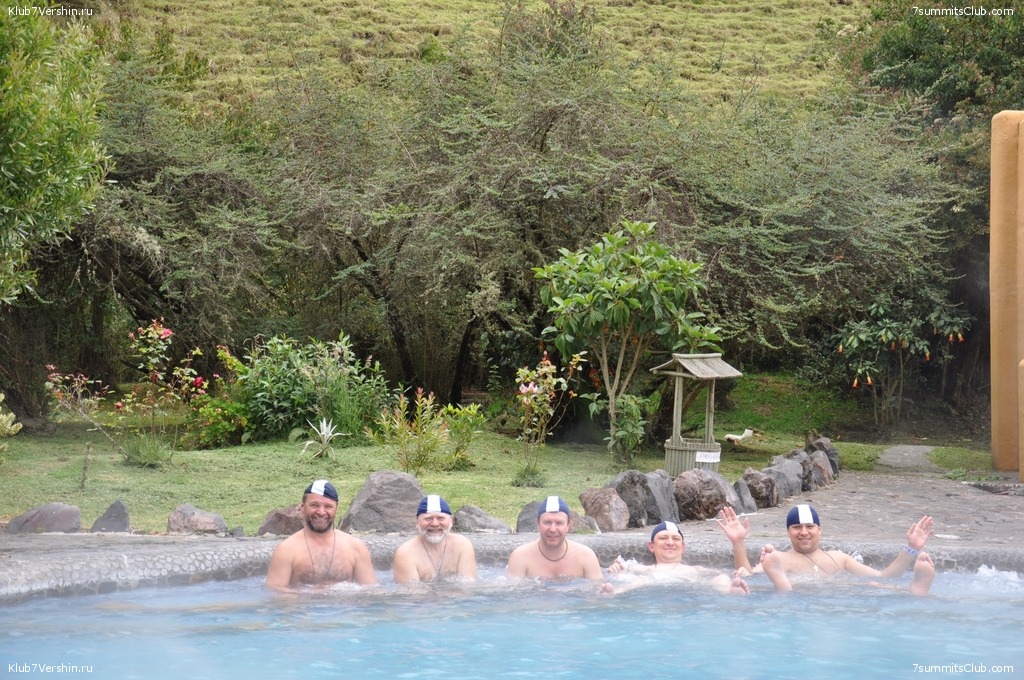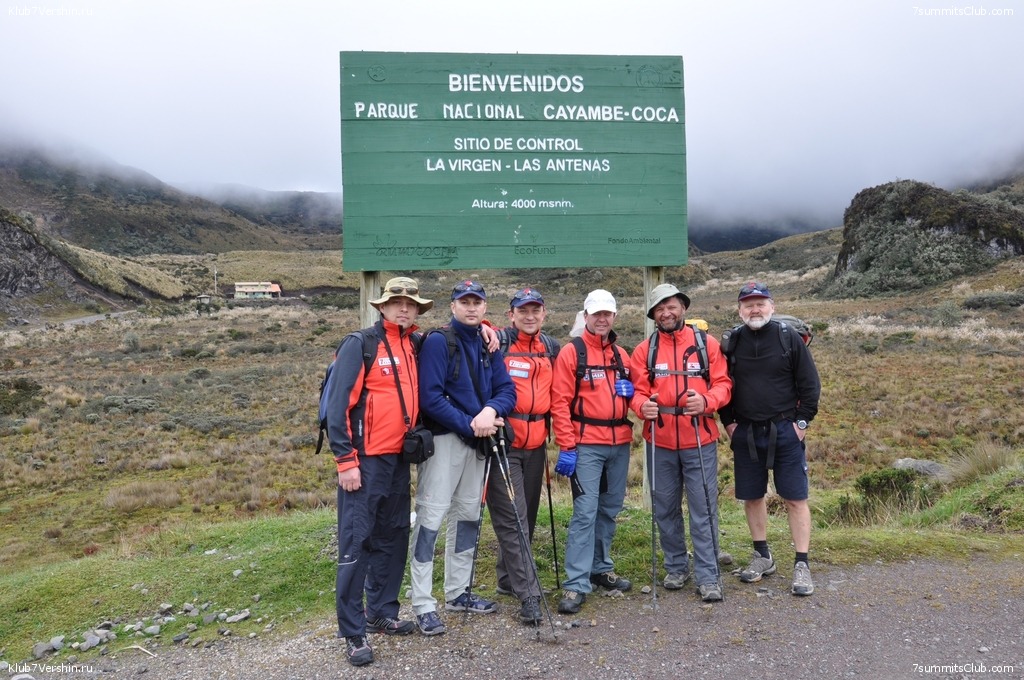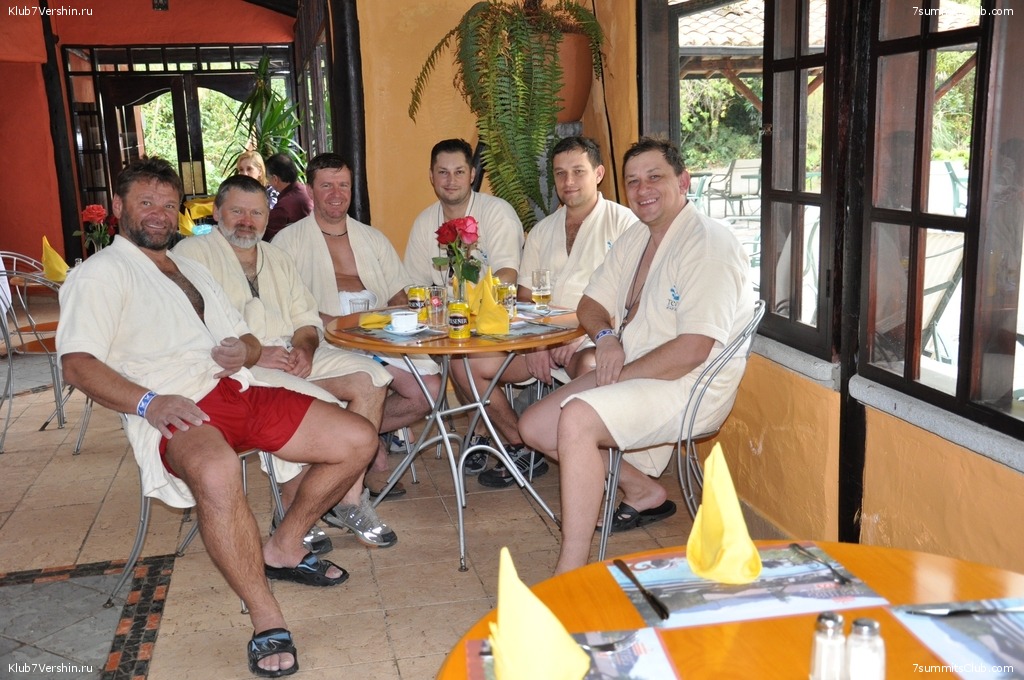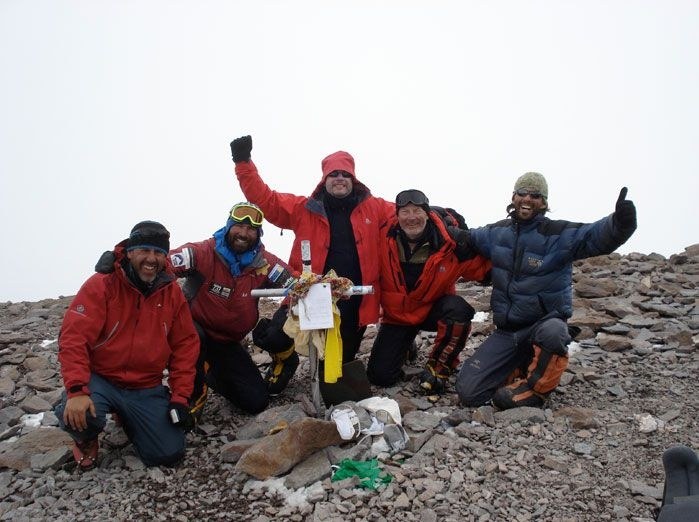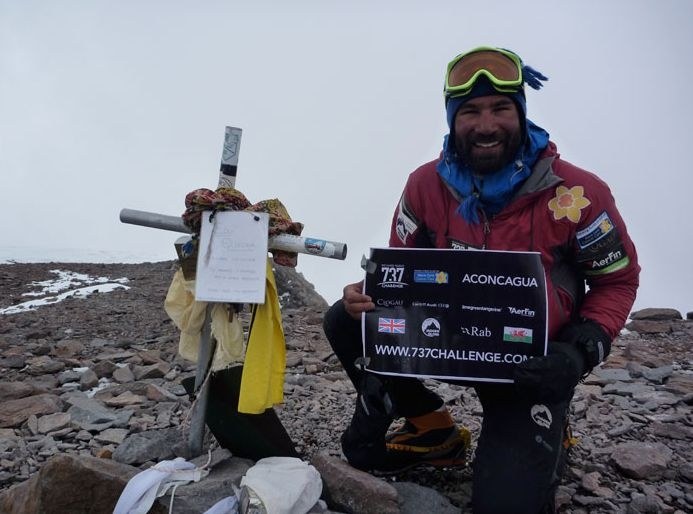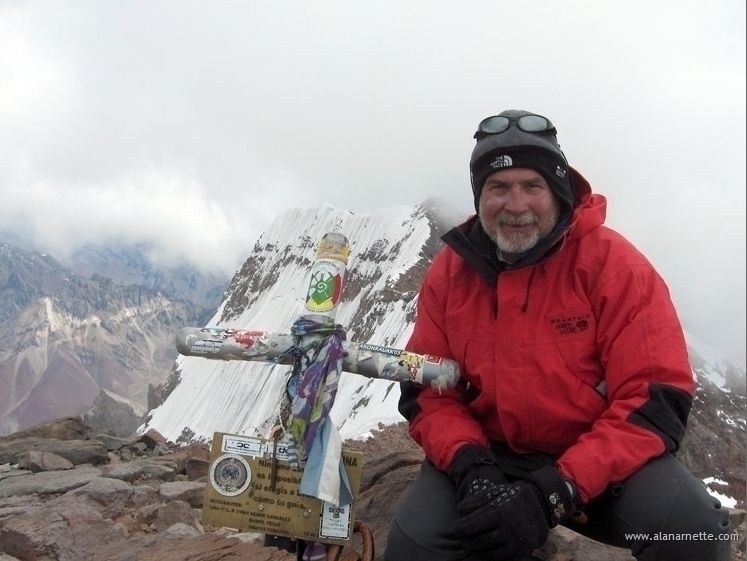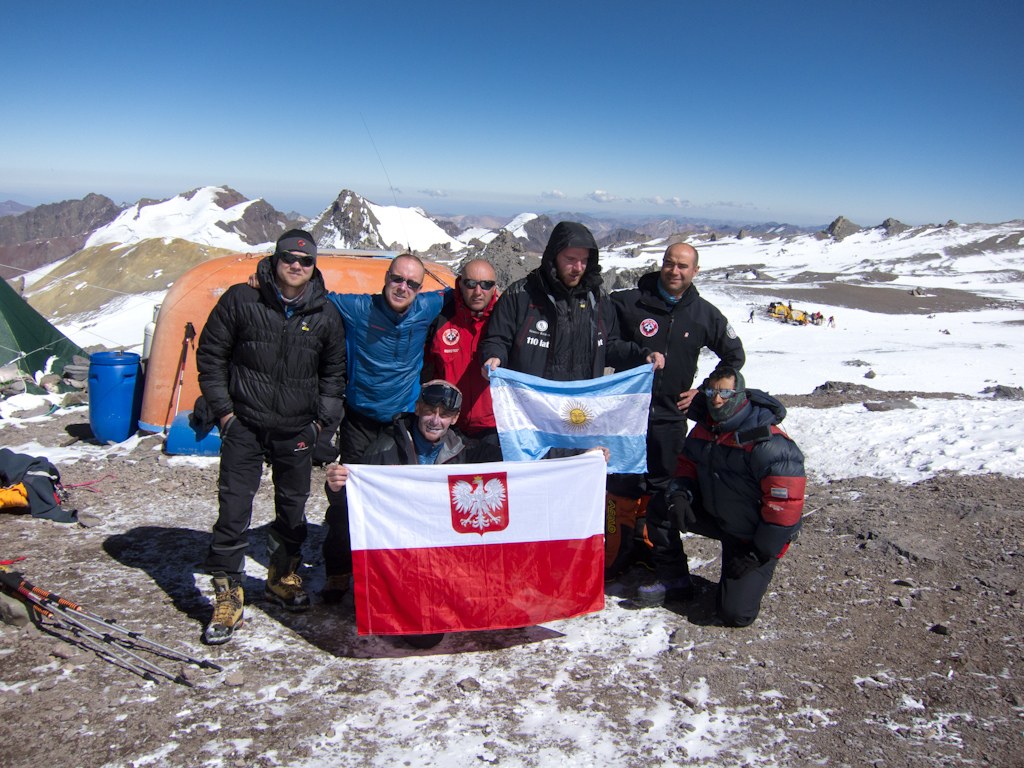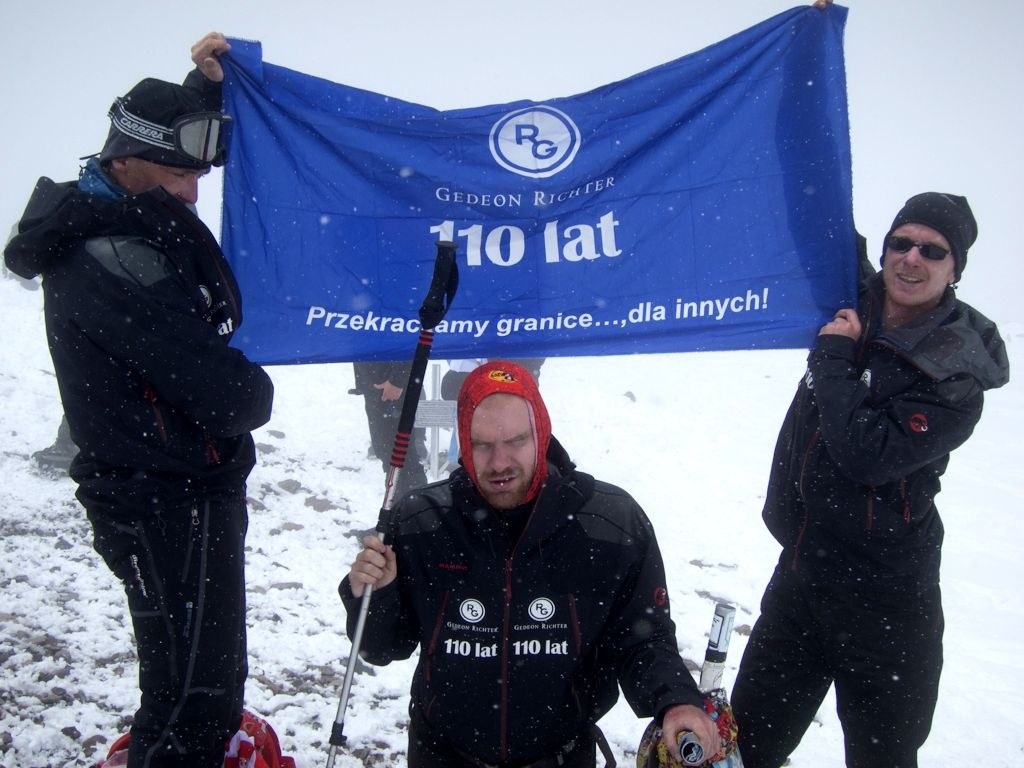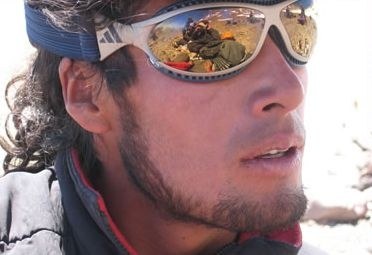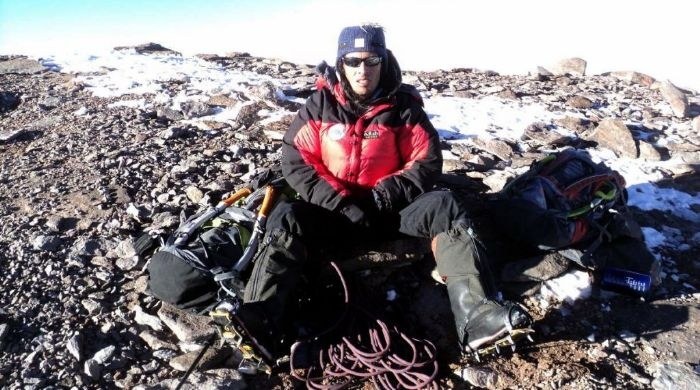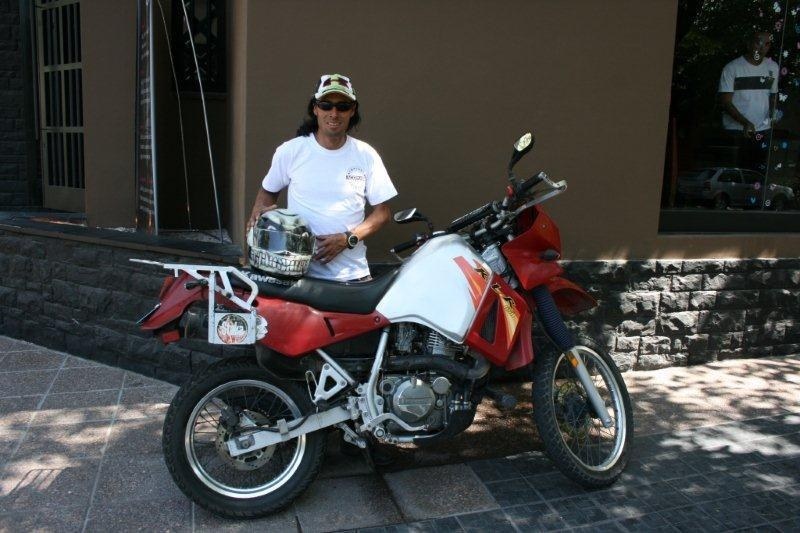All news
Tibet off limits to travellers in March
Don’t even think about visiting Tibet this month. China has closed the region to foreigners throughout March. The official reason is that tourists will be unsafe because of cold weather, ice, a shortage of hotel rooms, crowds ...
Don’t even think about visiting Tibet this month. China has closed the region to foreigners throughout March. The official reason is that tourists will be unsafe because of cold weather, ice, a shortage of hotel rooms, crowds attending Tibetan New Year festivities, and the anniversary of Tibet’s “liberation” in 1951. But skeptics say it has more to do with keeping out journalists and trouble makers during the third anniversary of bloody anti-government riots.
Seven summits of Steve Giesecke
Vinson.
There are few things on earth as rare as a truly perfect silence. Steve Giesecke would know. Having summitted the highest peak on each of the world's seven continents - each on the first attempt - Giesecke has been everywhere from the ...
There are few things on earth as rare as a truly perfect silence. Steve Giesecke would know.
Having summitted the highest peak on each of the world's seven continents - each on the first attempt - Giesecke has been everywhere from the equatorial jungles of Indonesia, and most recently, to the ice sheets of Antarctica.
The retired Air Force colonel returned from his final climb there only a few weeks ago. It was at Mount Vinson, on the world's most remote continent, where he experienced the most enveloping stillness he's ever known.
"When there's no wind - often there's wind - but when there's no wind, it's the quietest place on Earth," Giesecke said.
He found himself on a continent without a shred of development - no roads, cars, or people outside his group. The ice and snow absorbed any ambient noise around them. Even the voice of the nearest person couldn't travel far.
"You can hear your eyes blink," he said.
Like a lot of contractors at Joint Base Lewis-McChord, Giesecke spends most of his days at a desk. He works for the National Center for Telehealth and Technology, a Department of Defense office working to meet the psychological health and traumatic brain injury needs of the military community by developing and implementing technology solutions.
"I'm working on one of our initiatives that will bring the mental health programs of the DoD and VA closer together through collaboration on new technology assessment and development, in the areas of Web-based resources, social media and mobile applications," Giesecke said.
But in spite of the hours he spends in front of a computer, Giesecke's passion is pushing himself to the limit in some of the world's most inspiring locations. The result is a spectacular list of experiences - and more than a few examples of sheer determination.
Giesecke grew up in the Northwest, where hiking in the region's mountain ranges was almost a given. After college he climbed the Jungfrau in the Swiss Alps, which sparked an interest in climbing. When he joined the Air Force, he made a point of climbing mountains in the western U.S. between assignments.
Then in 1989, while stationed in Alaska, he climbed Denali, also known as Mount McKinley.
At 20,320 feet tall, Denali is the highest peak in North America and experiences some of the most severe weather in the world. In 1989 only 51 percent of climbers summitted the mountain, according to the National Parks Service. Today that number is 55 percent.
Giesecke had what he called "the usual experiences" on Denali. The weather was bad and only three of the people in his party made it to the top. At one point another group's tent was blown loose from the ridge above. Only one of the climbers made it out in time.
"It was very difficult back then," Giesecke said. "It still is very difficult, but back then things were a little bit heavier. You needed to take more time on the mountain to move the heavier equipment up."
About the same time, he read the book "Seven Summits" by Dick Bass, Frank Wells and Rick Ridgeway. Though at the time Giesecke thought the task out of reach for himself, the story of Bass and Wells, the first two men to successfully summit all seven peaks, would stick with him for years.
SETTING THE GOAL
When he retired from the Air Force a decade ago, Giesecke moved back to the Pacific Northwest, joined The Mountaineers club and started taking climbing classes. He continued climbing in the area, including summitting Mount Rainier multiple times. But Giesecke wanted a challenge that was bigger than he was. He wanted to know exactly how far he could go.
"I was in peak condition. I knew that if I was ever even going to have a shot at climbing the seven summits, any more of the seven summits, I knew it was then," Giesecke said.
In 2007 he signed up for a trip to Aconcagua on the Argentinean-Chilean border. The 22,841-foot peak is the highest outside of Asia. Giesecke told himself that if he made it to the top without any significant problems he would go straight to Nepal to climb Mount Everest. And in March of 2007 - after a U.S. pit stop just long enough to renew his passport - that's exactly what he did.
According to friend and fellow climber Gary Talcott, who grew up with Giesecke in Olympia, this level of resolve isn't out of the norm.
"He is very ambitious, goal oriented and determined to summit," Talcott said via e-mail, recalling a time when Giesecke helped him lead a group of climbers down from Mount Hood in whiteout conditions.
"It's fun to hear about his latest plans or last adventure," Talcott said. "I can just see the wheels turning."
The Everest trip took him two months.
Mount Everest is the tallest mountain above sea level in the world. A 1999 survey sponsored by the National Geographic Society puts the mountain at 29,035 feet tall, so high that its peak reaches into the lower limits of the jet stream. Sustained winds at the top can exceed 100 miles per hour. In July, the warmest month on the mountain, the average daytime temperature at the summit is -2 F. In January, the coldest month, the average is -33 F but can drop as low as -76 F.
Conditions are, in a word, extreme. Giesecke's experience was nothing less.
Among the final hurdles before reaching Everest's summit is the Cornice Traverse, a 400-foot knife-edged ridge leading to the Hillary Step. Teetering too far to the left would send a climber down 8,000 feet along the Southwest Face. A misstep to the right would result in plummeting 10,000 feet down the Kangshung Face.
It was here that the snow beneath Giesecke broke through, sending him sliding downward.
"I only fell about 20 feet, but the air beneath my boots was endless," he said.
Fortunately the anchors held, and he continued toward the top. After tackling the final obstacle, the 40-foot climb up the Hillary Step, Giesecke summited the mountain.
"I went up Everest on May 20, 2007, and that was a fantastic day," he said, "to be on top of the world."
DOWNHILL FROM EVEREST
The following year he took on Mount Elbrus (18,510 feet tall) on the border between Russia and Georgia. After that he went straight to Mount Kilimanjaro (19,340 feet tall) in Tanzania, leaving the area only two days before Russia's invasion of Georgia in the summer of 2008.
His next challenge was Carstensz Pyramid in Indonesia. Because the highest point on the continent of Australia is little more than a hike, some climbers take on the 16,500-foot peak to check Oceania off their lists.
While the climb itself includes a 2,000 foot wall climb topped by a Tyrolean traverse-a gap of air climbers cross on a rope suspended between two high points-getting there is a challenge all its own. Even reaching base camp requires a two-week trek through the jungle, days away from civilization.
According to Giesecke, it's the toughest trail he's ever been on.
"The face climb itself was actually fun," he said. "The jungle approach was a once in a lifetime thing. I wouldn't do that again."
And so, there was only one left. Mount Vinson, Antarctica's tallest peak, stands at 16,050 feet tall. But to get to it, Giesecke would have to wait.
In January he traveled to Punta Arenas, Chile. From there he planned to fly to Antarctica - but things were not as simple as he had hoped. A strike over rising fuel prices shut down the area, leaving Giesecke cut off from the last of the seven summits.
"It's challenging to accept things beyond my control," he said.
For him, waiting is the hardest part about mountain climbing - knowing that the goal is out there ahead of you, but not being able to reach out and grab it.
Giesecke was stranded in Patagonia for two weeks waiting for the strike to end. Not everyone in the group was as patient or invested. Some went home before so much as setting foot on Antarctica.
Not Giesecke.
"I'd gone all the way down to the end of South America to complete this trip," he said. "That's what I intended to do and that's what I did."
On Jan. 27, he made it to the top, finishing a journey he started in 1989.
"It's still sinking in," Giesecke said. "When I finished I came back home and I got out the book 'Seven Summits' and looked at it again."
Like explorers before him, Giesecke has been asked time and again why he does it. And really, there are countless reasons - the camaraderie of accomplishing great things with other people, the physical challenge, George Mallory's classic "Because it's there."
But for Giesecke, perhaps what it really comes down to the liberating challenge.
"I think when you're climbing it's one of the ultimate expressions of freedom," he said.
There aren't many places left with so few restraints, he said. But when he's pushing himself toward the summit of some impossibly high mountain, the only thing holding him back is how high he can climb.
By Marisa Petrich (Northwest Guardian)
Information about Marine Live-ice Automobile Expedition
North Pole.
MLAE-2011 is organized under the patronage of Arthur Chilingarov – Special representative of President of Russian Federation for international cooperation in the Arctic and the Antarctic. Russian Center for Arctic Exploration is ...
MLAE-2011 is organized under the patronage of Arthur Chilingarov – Special representative of President of Russian Federation for international cooperation in the Arctic and the Antarctic.
Russian Center for Arctic Exploration is developing innovative amphibious automobiles “YEMELYA” for traveling in High Arctic.
During previous expedition MLAE-2009 – seven-men crew in two automobiles “Yemelya-1” and “Yemelya-2” under the leadership of Vasily Elagin had started from Severnaya Zemlya, Russia and after 38 days and 2033 km of driving over drift ice for the first time in history of Arctic exploration reached the North Pole by car. It happened April 26, 2009 and now this achievement is included into Russian Book of Records.
This year 2011 our team wants to start after March 3 from town of Urengoy in Yamalo-Nenetskij Autonomous Region of Russia and drive up to North Pole until April 20 and further to Ward Hunt Island, Canada by May 26 and finish in the town of Resolute, Nunavut, Canada by May 31 plus a few days spare. From Resolute Bay we shall fly to Montreal to visit our volunteer coordinator Ilya Kovalev and stay a few days in his apartment before we can fly home to Moscow.
For the expedition we shall use newly built automobiles “Yemelya-3” and “Yemelya-4”. We plan to leave them in Resolute Bay for a period of 10 months until March 2012 when we plan to return to Nunavut from Russia and continue the route of the expedition further on along the coastline of Canadian Arctic to Alaska.
Yemelia amphibious truck
Specially designed for the harsh Arctic environment, amphibious truck Yemelia can negotiate ice hummocks, ice fields and thin ice of the Arctic Ocean. It’s a 6õ6 all-wheel drive vehicle with Diesel engines and trailers. The six wheels are “shod” in special shell tires; the air pressure is just 0.005 atm. The laden mass is under 1.5 tonnes, while total displacement of all six shell tires is almost 5 tonnes. Accordingly, the truck’s body submerges just by ten centimetres. The vehicle can sail in open water at 2-3 km/h driven by the rotating wheels, despite the significant windage of the body. Each truck will be towing two single-axis trailers, each carrying a 200-litre fuel tank and six 100-litre plastic barrels with food and equipment. Since the engines, transmission and all electrical equipment are placed inside the waterproof truck body, Yemelia is perfectly capable of sailing in salt water. The vehicle has a spacious heated and insulated cabin – a reliable, long-term home for the polar travellers.
SEA-ICE CARS EXPEDITION in March-April 2009, traveled by car from the Northern Earth to the North Pole. On the island Middle of Archipelago Northern Earth men and equipment were flown Aviation Administration Federal Security Service of Russia. The expedition started in half past 12 AM (Moscow time) on March 20, 2009 from a base station «Island Golomyanny». After passing over the island Medium and Strait of the Red Army and went to the ice of the Laptev Sea expedition has headed for the North Pole. Members of the expedition moved on a floating ice of the Arctic Ocean on cars-amphibians«Emelya 1» and «Emelya 2» design engineer Elagina equipped with wheels with tires of low pressure. Members of the expedition MLAE-2009: Vasily Elagin Athanassi Makovnev, Vladimir Obihod, Sergey Larin, Alexey Shkrabkin, Alexey Ushakov, Nikolai Nikulshin. For 38 days there are passed on cars more than 2000 km.The average air temperature on the route to the Pole was minus 35-45 degrees Celsius. There were strong winds from the east and north, the counter and lateral drift (0,4-1,5 km / hour). Operational headquarters of the Office of Aviation Russian FSB in order to ensure the safety of participants was conducted daily monitoring of movement of cars of expedition on a route. 26 April 2009 at 17.30 Moscow time on a satellite navigator expedition leader Vasily Yelagin to light coordinates 90° 00,000 'north latitude. The North Pole was reached.
Today, wedding of Harry and Ivana. Our congratulations !
Kilimanjaro.
They met in the spring of 2006, when the Dutchman Harry Kikstra worked as a guide in the Everest expedition of 7 Summits Club, and the Argentine Ivana Coria drove by on a bicycle. Cheerful thing: she drove from Malaysia to India, through ...
They met in the spring of 2006, when the Dutchman Harry Kikstra worked as a guide in the Everest expedition of 7 Summits Club, and the Argentine Ivana Coria drove by on a bicycle. Cheerful thing: she drove from Malaysia to India, through Tibet, is one. Young and beautiful! In short, Harry was awarded for his wretched season. For the Dutch began a new life ... maybe more suitable for him. After some time, Harry and Ivana went together on Kilimanjaro. Then go on an epic trip from the north of North Amenrica to the south of South America, at more than 2 years. Good test of compatibility before the wedding!
As usual a great site:
http://worldonabike.com/
Maybe Harry simply has no other shirts, but most likely he's just a proud member of our club
Ivana Corea is now 33 years old and she grew up in a friendly Argentinean family. Harry - 39 years, a typical new European intellectual, who grew up already in the computer era. He is a programmer, writer, photographer, sometimes mountain guide. His brainchild site 7summits.com was very important for us at the beginning of our work.
We wish the newlyweds a long and happy life together!
Understanding and complementing!
We wish to Harry to become a model father ! And to spend more time on affairs, earnings money, together with 7 Summits Club as usual.
Expedition Polar Ring 2011: TransArctic route Russia - North Pole – Canada
North Pole.
Two new cross-country vehicles named “Polyus” (Eng. “North Pole”) are being built and tested during 2008-2010. In February of 2011 a team of 6-8 explorers on advanced cross-country vehicles will start the route from ...
Two new cross-country vehicles named “Polyus” (Eng. “North Pole”) are being built and tested during 2008-2010. In February of 2011 a team of 6-8 explorers on advanced cross-country vehicles will start the route from Severnaya Zemlya Archipelago to to the North Pole - the most difficult stage of the expedition.
At the North Pole the expedition will meet members of the International Action “Ecology of Planet” dedicated to Global Climate Change, members of the Polar drifting station “North Pole – 2011”, members of the Organizing Committee, and representatives of the expedition’s partners, sponsors, and Russian and worldwide media to highlight the project. The expedition plans to hold the first Arctic Press Conference in the North Pole’s history .
From the North Pole the travelers will go to Canada. On the Canadian Arctic archipelago, the route will pass from Ward Hunt island to Eurika and further down to Resolute Bay (Magnetic North Pole), where the third stage of expedition will be completed.
Fresh information from Expedition 'Polar Ring 2011': Mar 2
The scheduled for yesterday flight from Vorkuta has took place. Two airplanes have successfully delivered the polar explorers and equipment to the island Sredny. The main task now is to assemble all-terrain vehicles and to get to the start point. Too much time had been lost in Vorkuta waiting for a favorable weather. Mechanics assigned themselves only three days to assemble the all-terrain vehicles. It is an extremely short time. There is no time for communication with the continent. Work is humming.
A group of Luba Ivanova came from the ice of Patagonia ...
Hi everybody ! Just today, March 2, we descended into Chalten after a difficult eight-day passage to Glacier fields of Patagonia. All participants are healthy and happy, they bring home lots of new impressions and beautiful photos. We'll be ...
Hi everybody ! Just today, March 2, we descended into Chalten after a difficult eight-day passage to Glacier fields of Patagonia. All participants are healthy and happy, they bring home lots of new impressions and beautiful photos. We'll be waiting for photo gallery from our photographer Ivan Lukasiewicz. It will be ready in the middle of March.
Briefly about the expedition: the weather was good only in the first 2 days, and the rest of the rain came down with a strong wind. This, however, did not prevent us to enjoy the beautiful scenery. Fitzroy, the endless expanse of ice. We stayed at the base camp at
the western face of Cerro Torre, broke under heavy wind to shelters near the saddle del Viento, slept under a sprawling relic trees. And finally, tomorrow we will enjoy the falling blue ice of the glacier Perito Moreno in Calafate.
And yet we do not forget about the delicious local beer and, of course, Argentine wine. Photos - in the near letter, when we will be in civilization.
With the fiery Argentinian greetings. Luba
Elbrus as a second national project or Caucasus ski resorts behind a fence
Elbrus.
Despite recent terrorist attacks near Elbrus Mountain in the North Caucasus, plans to establish a tourist industry in the region remain intact, even though tourists are currently banned from the region during a counter-terrorist operation. ...
Despite recent terrorist attacks near Elbrus Mountain in the North Caucasus, plans to establish a tourist industry in the region remain intact, even though tourists are currently banned from the region during a counter-terrorist operation.
Tourist cluster
A special law providing tax breaks for the tourist cluster in North Caucasus has been discussed at a meeting with President Dmitry Medvedev’s aide Akrady Dvorkovich, Vedomosti reported. The law could be accepted before the end of the year.
Five zones in the region are part of a single tourist cluster Vysota 5642 (height) in Karachayevo-Cherkessiya, Kabardino-Balkariya, North Ossetia, Dagestan, Krasnoyarsk region and Adygea. The resorts, aimed at bringing in income and jobs to the ailing region, will have a total budget of 451.4 billion roubles, 86.7 per cent will be attracted through private investors.
The Skolkovo of the Caucasus
The resort organisation suggested removing all taxes apart from VAT for the participants of the scheme for ten years, as well as fast-tracking bureaucratic and land paperwork.
The company will have to follow up the proposal with finance ministry, but Dvorkovich assumes that there should be no problems for tax breaks similar to Skolkovo’s.
In the innovation centre investors are exempt from profit and property tax, and insurance is at 14 per cent. The resorts will receive the land for free, and will then have the right to rent it out to investors for 49 years.
Terrorists fenced off
With security as the main concern in a region often hit by terrorist attacks, the tourist cluster recognise that it is an issue they will have to address.
There were also calls to build a three metres fence around the resorts to ensure the guests’ safety in the volatile region.
However, that suggestion was deemed excessive, and law enforcement were tasked with developing constructive safety measures in the cluster and the region overall.
Sources in president’s administration say there may be a clause about safety issues in the region in the law.
Cameras to protect from attacks
The fence will also ruin the face of the resort and it could be climbed over, president of Gorimpeks group and co-owner of Krasny Shtorm security holding Viktor Volikov told Vedomosti.
In order to fight terrorist attacks Volikov suggest surveillance. It would be much more effective to have surveillance stations along the tramway that would monitor data from video cameras set up on every support.
However, safety issues for locals have to be solved before any tourists should be allowed to go there, according to head of Public chamber expert group on North Caucasus Kaloi Akhilgov.
And for this law enforcement has to work better to understand the reasons for the sudden surge of violence in Kabardino-Balkaria, where it has been relatively quiet for many years.
Victor Bobok call from the summit of Aconcagua
Aconcagua.
He said that his team: Alexander Apalko, Natalia Nozdrina, Vladimir Rychenko, Victor Serebryakov and Landysh Khafizova – are staying on the highest peak in South America, Mount Aconcagua. The weather is normal, they have extra time ...
He said that his team: Alexander Apalko, Natalia Nozdrina, Vladimir Rychenko, Victor Serebryakov and Landysh Khafizova – are staying on the highest peak in South America, Mount Aconcagua. The weather is normal, they have extra time and they hope that the descent will take place without problems. The first attempt to assault, which took place on February 24 has been interrupted at an altitude of 6,800 meters. Our group just stopped by Rangers. The wind was very strong and cold wind, so that they were generally right. Not all participants were able to stay and decide on a second attempt, the team dropped to four. Still uncompromising mountain forced to surrender their tenacity ...
02/27/2011. Letter from Nikolay Zakharov. Krasnoyarsk (Siberia) team
After two days of rest 22 and February 23 at the base camp at the "Plaza de Mulas" team of 10 people on Feb. 24 came out on the ascent.
Unfortunately, the evening of February 23 the weather turned bad - started snow, which continued the next day. We decided not to wait for better weather, climbed to an altitude of 5500 meters, stayed the night. The next day, Feb. 25, after a snowfall and strong winds reached the height of 6,100 meters, where, setting three tents, sleeping.
February 26, coming on climbing at 6 am, all team members to the 13 o'clock reached the highest point of America - the top of Aconcagua, 6,962 meters above sea level. At the top were raised flags of Russia, Krasnoyarsk region, Krasnoyarsk and Krassporta.
At the top were:
Antipin, Sergey
Bakaleinikov Eugene
Karlov Alexander
Kozyrenko Eugene
Kokhanov Valery
Peshkin Alexandr
Smetanin Nicholay
Taranenko Natalia
Filippov, Arkady
Hatnyuk Ivan
News of our expedition: Aconcagua, we look forward to another attempt ...
Aconcagua.
The first attempt to climb Aconcagua by he group of 7 Summits Club under the leadership of Victor Bobok was failed. Inclement weather forced our climbers to turn back, not reaching the top. According to preliminary information, five ...
The first attempt to climb Aconcagua by he group of 7 Summits Club under the leadership of Victor Bobok was failed. Inclement weather forced our climbers to turn back, not reaching the top. According to preliminary information, five climbers Alexander Apalkov, Natalia Nozdrina, Vladimir Rychenko, Victor Serebryakov and Landysh Khafizova plan to make another attempt. Together with guides Viktor Bobok and Mara Barbeyra. Although little time is left. But surprisingly, the first time this season, the weather forecast is favorable. Three climbers Konstantin Beirat, Ilya Kovalev, Pavel Kostrikin already gone down, the exact reasons yet unknown to us. Sick before Konstantin Tsybunov already sent greetings to the Iguassu Falls.
New success on Kilimanjaro
Kilimanjaro.
Group of climbers 7 Summits Club under the leadership of Alexander Abramov and Dmitry Ermakov successfully climbed to the summit of Kilimanjaro in the morning on February 25. According to preliminary information, all members reached the ...
Group of climbers 7 Summits Club under the leadership of Alexander Abramov and Dmitry Ermakov successfully climbed to the summit of Kilimanjaro in the morning on February 25. According to preliminary information, all members reached the summit. At this time, the group of Ludmila Korobeshko was on safari. And on his return to the hotel, Luda has sent pictures that illustrate her previous post ..
Today Sergei Bogomolov celebrates 60 years
Famous Russian climber, a great friend of the 7 Summits Club and the first in our country contender for "14 eight-thousanders, Sergei Bogomolov celebrates his 60 th anniversary. At the same time it is and 40 years of his climbing. We send ...
Famous Russian climber, a great friend of the 7 Summits Club and the first in our country contender for "14 eight-thousanders, Sergei Bogomolov celebrates his 60 th anniversary. At the same time it is and 40 years of his climbing. We send warmest congratulations to him ! We wish to realize his dream ! Good luck on K2 !
The famous Russian collector of eight-thousanders, Honored Master of Sports, Sergey Bogomolov
To become the first Russian to have risen to all 14 eight-thouthanders, Bogomolov should climb yet one another mountain. But this mountain - it is the formidable K2, probably the most capricious and unpredictable mountain in the world.
In order to successfully go to K2, Sergey Bogomolov mind to make a big project and build a strong company of climbers. The main option at the moment - the ascent from the north, from the Chinese side. Arriving by jeeps from Alma-Ata and further with camels caravan. The route from the north to K2 is in general easier and (more importantly) safer than from the south. However, the difficulties of organizing caravan, supply of expedition, require much more effort than in the south. And groups of climbers do not appear here each year.
In a small team it will be very hard, so Sergei Bogomolov plans to build a strong and friendly international team, with Russian-speaking core. We are ready to help him in this, especially because Bogomolov has been a guide of groups of 7 Summits Club. And we hope that our cooperation will continue in the future...
Climbers from Krasnoyarsk reached the top of Aconcagua
Aconcagua.
Valery Kokhanov and Eugene Kozyrenko, the first team from Krasnoyarsk climbers, reached the summit of Aconcagua. They started climbing on February 21 at 6 am àêùü the assault camp, situated at an altitude of 6,100 meters. At 13 am local ...
Valery Kokhanov and Eugene Kozyrenko, the first team from Krasnoyarsk climbers, reached the summit of Aconcagua. They started climbing on February 21 at 6 am àêùü the assault camp, situated at an altitude of 6,100 meters. At 13 am local time they reached the summit - 6962 meters. Two more climbers Sergey Antipin and Arkady Filippov all this time were in the assault camp, providing insurance for climbers in case of bad weather. Severe frost and wind could not prevent climbers from Krasnoyarsk fulfill their mission: to explore and a route for the whole team. A team ascent, in which Kokhanov and Kozyrenko and will also participate, is scheduled to begin February 24 and end on February 27.
Valery Kokhanov: "Way up was much harder than I thought”.
All members of our group climbed Mount Kilimanjaro
Kilimanjaro.
Ludmila Korobeshko sent SMS from the top of Kilimanjaro. The team of company OLMA reached the highest point, Uhuru Peak, headed by its leader Yuri Barinov. Well done! Almost for all this was the first ascent in life. We wish you all to ...
Ludmila Korobeshko sent SMS from the top of Kilimanjaro. The team of company OLMA reached the highest point, Uhuru Peak, headed by its leader Yuri Barinov. Well done! Almost for all this was the first ascent in life. We wish you all to continue climbing career and again and again to experience a joy of victory in the mountains of the world!
The group company OLMA: Dmitry Akkuzin, Andrew Barinov, Yuri Barinov, Marina Bylinkina, Julia Danilkina, Irina Eremeeva, Olesya Korosteleva, Anatoly Yakushkin. Guides: Ludmila Korobeshko and Tina Taova.
The group, which is leading by tour guides Dmitry Ermakov and Alexander Abramov, started today from the Mandara Hut to Horombo, hoping to meet in the evening the winners.
Victor Bobok with his group descended on the Plaza de Mulos, to wait for the weather
Aconcagua.
Acclimatization of our third group of Aconcagua ended. Victor Bobok appeared in skype from the Plaza de Mulos. Nothing good has happened with the weather: still snowing, blizzard. Even worse. An exit at Nido de Condores was not easy. ...
Acclimatization of our third group of Aconcagua ended. Victor Bobok appeared in skype from the Plaza de Mulos. Nothing good has happened with the weather: still snowing, blizzard. Even worse. An exit at Nido de Condores was not easy. Unfortunately, Constantine Tsybunov fall ill and now he is already in a warm Mendoza. The remaining climbers Alexander Apalko, Constantine Beirat, Ilya Kovalev, Pavel Kostrikin, Natalia Nozdrina, Vladimir Rychenko, Victor Serebryakov and Landysh Khafizova with a guide of 7 Summits Club Viktor Bobok will wait for bearable weather at the base camp. Prognosis is not good. Our friends from Krasnoyarsk today tried to break through to the top, do not yet know how it happened.
According to a report from the site TOCHKASTRAHOVKA.RU two athletes from Krasnoyarsk Valery Kokhanov and Eugene Kozyrenko started to the summit
Mount Cotopaxi is climbed, amazing day
Today, 20 February, our team of 8-00 local time, ascended to one of the most unique volcanic peak of Planet Earth Mount Cotopaxi 5897m. To be honest, it was a very good climb, snow and ice, very beautiful. Caldera, even in our presence, ...
Today, 20 February, our team of 8-00 local time, ascended to one of the most unique volcanic peak of Planet Earth Mount Cotopaxi 5897m. To be honest, it was a very good climb, snow and ice, very beautiful. Caldera, even in our presence, threw out the multiple side fumarole clouds of gas with a pungent smell of sulfur. Our ascent ended with a rapid descent into Jose Ribas refuge at 4810m. We do not really stayed here, because with 23 hours of the previous day's we saw nothing but snow and ice slopes of Cotopaxi. Hungry and in climbing clothes we arrived in a small Ecuadorian town of Banos a few hours later. Now we are after a shower, fresh and washed, drink locally bottled mineral water and discussing plans for the ascent of Chimborazo
“Fire Ring of the Earth” superexpedition started on 19 February 2011
The scientific and sports expedition “Fire Ring of the Earth”, organised by the Russian Geographical Society and dedicated to the 65th anniversary of the Society’s Krasnodar Division, will be launched on February 15, 2011. ...
The scientific and sports expedition “Fire Ring of the Earth”, organised by the Russian Geographical Society and dedicated to the 65th anniversary of the Society’s Krasnodar Division, will be launched on February 15, 2011. This large-scale expedition will last 900 days, which is about 3 years. The route, covering more than 70,000 kilometres along the Pacific Ring of Fire, will take five expedition members across 19 countries.
Over the course of the expedition, the main team will be joined by auxiliary teams of scientists, who will monitor the behaviour of active volcanoes and explore locations with less intensive or diminishing volcanic activity. Hot springs, geysers, gas- emitting vents and cracks can be found in abundance in such places, indicating continuous underground activity.
Interview with Konstantin Merzhoev, leader of the expedition “Fire Ring of the Earth”
01.02.2011
In the run-up to the launch of the scientific and sports expedition “Fire Ring of the Earth”, the Russian Geographical Society spoke to its leader, Konstantin Merzhoev.
A travel enthusiast since 1990 and member of the Russian Geographical Society since 1991, Mr Merzhoev holds the titles of master of sports and champion of Russia in sports tourism. He has taken part in various expeditions, including “Buordakh – 92”, “Trans-Caucasus -93”, “The North Pole – 94”, “Following the roads of Russia– 97”, “Round-Kuban Tour -98”, “The one hundredth meridian-2002”, “From the Varangians to the Greeks – 2003”, “In the footsteps of heroes – 2005”, and “Eurasia – 2007”.
When not involved in any expedition, Konstantin Merzhoev works as head of the Health Resorts Division of the Krasnodar Region’s Department for Integrated Development of Health Resorts and Tourism. He is keen on reviving a tradition of hiking and active tourism in the region. “Many people see the Krasnodar region only as a popular destination for beach-related tourism. I believe it’s time we broke this stereotype. Our region has a lot to offer – horseback riding in the mountains, river rafting, horseback and bicycle hikes,” says Mr Merzhoev.
Currently, Konstantin Merzhoev is getting ready for the expedition “Fire Ring of the Earth”. The interview below gives interesting insight into this 900-day long expedition along the Pacific Ring of Fire.
Q: Good afternoon, Konstantin. You are about to embark on a large-scale expedition - “Fire Ring of the Earth”. The expedition will last 900 days, which is about three years of uninterrupted passage along the Pacific Ring of Fire. Have there been any similar expeditions before?
A: No, there haven’t.
Q: The name of the expedition speaks for itself. But how did you get the idea to explore volcanoes and seismically active zones?
A: I came up with this idea quite a long time ago. I’m a geographer by training- more precisely a geomorphologist- therefore I’m extremely interested in all processes happening on the planet. Volcanoes and volcanic eruptions have always fascinated not only specialists, but also ordinary people. Recently, volcanic activity on the planet has intensified, and this fact is more than intriguing.
Q: Are you planning to climb any volcanoes?
A: Yes, we will climb some of the highest volcanoes of the countries and continents that comprise the Pacific Ring of Fire. In all, around 70 volcanoes – both active and extinct.
Q: Do you have any other goals apart from this?
A: We intend to carry out medico-biological research, make meteorological observations all along the route, collect data on volcanic activity, conduct ethnographic observations, take photographs of volcanoes, and shoot a documentary.
Q: Speaking of the documentary, will it be dedicated to the Pacific Ring of Fire as the zone of major seismic activity, or rather to the expedition and its members?
A: We hope that we will shoot enough material not to have to confine ourselves to one particular theme for the film.
Q: How will the expedition help promote geographical knowledge?
A: All results of the expedition will be disseminated through lectures and seminars to geography students, as well as through reports at meetings of the Russian Geographical Society’s Academic Council. We have agreed with the Russian Geographical Society that teams of other scientists, travellers and reporters will join the expedition at some points along the route. We also plan to cooperate with international organisations engaged in promoting geographical science.
Q: Nowadays, you have to offer high-quality photographs if you want to attract the mass media. Will you have photographers on your team?
A: Certainly. In addition, at some points along the route our main expedition team will be joined by auxiliary teams, who will have professional photographers among them.
Q: The main expedition team has already been put together. Will the team remain unchanged till the end or will there be reshuffles depending on location?
A: We plan for the main team to remain unchanged for all 900 days. But as experience shows, things may change. And as I’ve already mentioned, there will be auxiliary teams, which will join the expedition at different points along the route.
Q: How does your family like the idea of your being away for such a long time? It must be difficult both for them and you.
A: Everybody asks this question. I can’t give you a definite answer. I’ve gone on expeditions for 20 years already, and my family is sort of used to that now. Moreover, my children participate in my expeditions from time to time, and the “Fire Ring of the Earth” will not be an exception.
Q: Covering 70,000 klometres is no small feat. What means of transport are you planning to use?
A: We will travel by various motor vehicles, by bicycle, on skis, on a catamaran-type yacht, and of course on foot.
Expedition Route
Q: You are going to sail across the Drake Strait, which is not the easiest place to sail across. I have been there in calm weather and I can tell you that was really hard. How are you going to cross the strait?
A: We’ll do nothing extraordinary. We’ll just cross it on a steamship.
Q: Which part of the route do you think will be the most challenging physically and which one psychologically?
A: I think it will be Antarctica and the countries we will visit further, as by this time we will definitely have become tired both physically and psychologically.
Q: How are you preparing for the expedition?
A: We train a lot, we walk into the mountains and we make regular ascents of mounts Elbrus and Kazbek.
Q: What will be the first and the last location on the expedition route?
A: The expedition will set off from Cape Prince of Wales in Alaska and end in the city of Petropavlovsk-Kamchatsky in Russia.
Q: Do you usually keep travel notes during your expeditions? I’m sure your adventures and impressions will be of interest to a great many people. Are you going to publish your travel notes on the Internet?
A: Yes, we are going to make our travel notes available on the Internet, and we will update them regularly, hopefully every day. So web-users will be able to follow up on our news.
Q: And the last question. What does travelling mean to you?
A: Travelling means everything!
Konstantin spoke to Yaroslav Nikitin of the Russian Geographical Society
Other members of the team (prepared by Tatiana Nefedova)
Aleksey Kazachenko, 26, works as a chef in a Krasnodar restaurant. In 2008, he won the title of the greatest chef in Russia’s Southern Federal District. “I walk into the mountains four times a year,” says Aleksey. “I’ve been to the Tien Shan, Pamyr, Caucasus, and Mount Elbrus. Expeditions are an important part of my life. That’s why when I heard about the “Fire Ring of the Earth” expedition, I asked Konstantin Merzhoev to include me on the team.”
Andrey Kolodkin, 26, graduated from a medical college as a male nurse. For six years he worked as part of a first aid unit. Currently Andrey is a 4th-year student at a medical university. “I’ve always been fascinated by volcanoes,” says Andrey. “So I simply couldn’t miss the opportunity to visit the most famous volcanoes of the planet. My family understand and support me. The most difficult thing was to get a gap year at the university…”
Nikolay Kovalenko, 26, a teacher and psychologist, heads a Krasnodar-based sports and tourist club “Azimuth”. “I’ve jumped at this opportunity, just as other members of the expedition have,” says Nikolay, who will be a timekeeper during the expedition. “My mother took the news quite calmly, though I think she can’t get over the fact that I will be away for two and a half years.”
Ilya Semyonov, 25, works as a long-haul truck driver and a tourism instructor. “I’ve been keen on travelling since my childhood, and have always taken part in various hiking, camping and backpacking trips,” says Ilya, who is responsible for expedition gear. “When I announced that I was going to participate in the “Fire Ring of the Earth” expedition, my family was not at all surprised. I’m not worried about losing touch with the real world, for it’s unlikely that any considerable changes will take place in the world over just two and a half years.”
Kamil Ziganshin, who is in his seventies, works as a writer and reporter. “I’m embarking on this unique expedition to prove that being in your seventies is not the end for a man, it’s just the beginning! I’m looking forward to going through a real male bonding experience, and getting closer to God, by climbing the tallest mountains on the planet. ”
English text by Nadezhda Tsyba
Message from Ecuador: Hooray - we are on the top !!!!!
Dear friends, sometimes the information received in advance may not be true. Today our Command climb one of the most significant peaks in Ecuador, the peak of Iliniza Norte 5126 m. We were sure that this summit is simple and ...
Dear friends, sometimes the information received in advance may not be true. Today our Command climb one of the most significant peaks in Ecuador, the peak of Iliniza Norte 5126 m. We were sure that this summit is simple and accessible even to small children. However, we saw a different world ......
Our understanding of the route we have presented in photographs. Maybe it was even more complicated. The main thing we realized: we do not need to stop ...
Go ahead - to Cotopaxi )))))
Several of our expeditions started in afew days
The team of climbers Tuva visited our office. This time they fly to a distant Australia for climbing Mount Kosciuszko (2228 m). Famous Tuvan writer and climber Maadyr Khovalyg is the team leader. The team: Marianne Surunchap and scientist ...
The team of climbers Tuva visited our office. This time they fly to a distant Australia for climbing Mount Kosciuszko (2228 m). Famous Tuvan writer and climber Maadyr Khovalyg is the team leader. The team: Marianne Surunchap and scientist from Kyzyl Vyacheslav Sevek. They plans to climb the summit on February 23, the Day of Defender of the Fatherland. International project "7 summits of the world - Tuva" was launched in 2008. Trip to Australia - the fifth expedition. Athletes have already conquered Mount Elbrus, Kilimanjaro, Aconcagua and McKinley. After Kosciusko climbers, according to plan, will conquer Everest.
Andrey Selivanov, well known in this country went to the doctor-climber on Kilimanjaro as a guide of 7 Summits Club. Andrew is the head of the center of sports and mass work TSOGU Andrey Selivanov, so on top of it plans to set the flag of the university. On the eve of departure, Andrey Selivanov shared his thoughts with reporters:. "I do not set myself the goal of conquering all the highest in the world. I was very fascinated climbing, I'm doing things I love "
Another strong climber, our new guide and manager Dmitry Ermakov went to Africa.
Dima spent several years guiding in seventhousanders of Tien Shan and Pamir. Now he awaits debut on Kilimanjaro. It will be a large group, comprising 11 people, that departs tomorrow. President of the 7 Summits Club Alexander Abramov will go to Kilimanjaro with them.
And Lyudmila Korobeshko, meanwhile, along with a group of Olmi and Tina Taovo came to Marangu Route on Kilimanjaro.
Acclimatization in Ecuador or a joy of humanbeing ...
Acclimatization in Ecuador. Specificity of mountaineering in the Andes. Early uprising of team after a night of tropical shower was quick and organized. Breakfast in the tradition of the colonial kitchen was speedy and succinct. The ...
Acclimatization in Ecuador. Specificity of mountaineering in the Andes. Early uprising of team after a night of tropical shower was quick and organized. Breakfast in the tradition of the colonial kitchen was speedy and succinct. The task of the day was to carry out an acclimatization on one of passes of the Andes in the area of national park Cayambe. Our local guide Franklin asked the steady pace of walking, during which we had no shortness of breath to climb up to 4000m. Positive emotional conditions allowed to rise 500 meters, passing 11 km in 2.50 hours. For a good command does not exist of problems with the weather and terrain! Further descent into the area of thermal springs Papalyakta was made within an hour, brought us to a place where water is heated by volcanoes….. ...
While Victor Bobok discovered America or what is the news on Aconcagua ...
Aconcagua.
While Victor Bobok, in anticipation of the final group of the 7 Summits Club on this season, travels to cities and beaches of South America, we'll monitoring some interesting events that have occurred on the slopes of the highest mountain ...
While Victor Bobok, in anticipation of the final group of the 7 Summits Club on this season, travels to cities and beaches of South America, we'll monitoring some interesting events that have occurred on the slopes of the highest mountain in South America in the last few weeks.
Richard Parks has beaten the weather to reach the second summit of his epic challenge to climb the highest peaks on all seven continents and trek to both Poles. The former Newport Gwent Dragons player reached the summit of Aconcagua, the highest peak in South America, on Saturday at 2.54 pm local time.
Rapidly deteriorating weather meant that Parks had to decide whether to risk gale-force winds in order to reach the summit of the 22,830ft Argentinian peak. Before scaling the summit, Parks said: "These kind of decisions are always tricky and need to be talked through at length. I am lucky to have the expert guidance of our experienced leaders as well as a good team."
The former Wales international is aiming to raise £1m for Marie Curie Cancer Care through his 737 Challenge - climbing seven peaks and reaching three poles in seven months. Parks reached the South Pole in December and Mount Vinson, in Antarctica, last month. His next challenge will be to summit Mount Kilimanjaro, the 19,340ft African peak.
He now has 155 days to reach five more summits and the North Pole. If he were to be successful in his challenge he would be the first person to climb all seven peaks in a calendar year.
*******
January 29 was a good day for climbers. It also did not offer with good weather, but the wind was stiller and occasional lack of visibility was not an insurmountable obstacle. On this day, American Alan Arnette reached the top. This is another hero of our previous news which set out to climb Seven Summit within a year raising unds to fight Alzheimer's disease. Most of his expeditions was and will be organized by International Mountain Guides. On Aconcagua their team had as summiters 8 clients and 3 guides. Rare luck for this year, and it is show quality of guiding.
*******
A visually impaired Pole and another with only one lung who climbed the highest peak in the Andes, the Aconcagua, have returned home from their expedition.
Journalist Lukasz Zelechowski, who is blind, and marathon runner with one lung Piotr Pogon conquered the 6962 meter peak, with practically no acclimatization, after a 17 hour long nighttime climb on 29 January.
“We were extremely tired and had to climb on very unstable terrain”, Zelechowski has told a press conference in Warsaw.
The two climbers admitted that they paid heavy a price for this feat apart from the obvious fatigue. One of them suffered frostbite, another had painfully burned hands from the scorching sun.
Lukasz Zelechowski had already climbed the tallest peak of the Caucasus, Mount Elbrus, as well as the Kilimanjaro in Africa. “The mountains are my passion. I don’t intend to give up climbing,” he said.
Piotr Pogon, who lost his lung due to cancer when he was sixteen, is still battling with the disease. “I have renewed cancer but I am not giving up. I want to drink as much from life as I can”, he told the PAP news agency.
*******
Speed record for the Polish route, or are not completely Polish?
The name of the Peruvian mountain guide Holmes Pantoja Bayona became known a few years ago, when he in 2006 he set a speed record ascent of Aconcagua via the normal route. His result was 20 hours 32 minutes from Horcones to Horkcones was later surpassed by the Spaniard Egocheaga. February, 3 this year, 32-year-old Peruvian athlete ran the second classics - Polish route, more technical. True, the path was not direct Polish and it is unlikely the record will be so attractive to beat it.
It is interesting to note that setting a record Pantoja came just 4 days after climbing the mountain with clients. It was his 21 th ascent of Aconcagua in 8 years of work as guide.
Starting from the gate of the national park, Apu, as everyone calls him, ran lightly up the camp Colera. There he was waited by his friend Vito Magni. They together traverse on the "Polish" side. At the foot of the steep part, they roped, and an ice wall, "the Polish direct route" climbers climbed, insuring all the rules. But quickly. Time from Horcones to the top was 20 hours, 16 minutes. And recorded. Friends went down for the night at a shelter Elena near Colera, where sat all night without warm clothes. The next day, Apu went down to his Kawasaki motorcycle, left at the entrance to the park. And started to implement further plans. Namely: a couple of days drink wine with friends in Mendoza, to move by motorcycle in Chile, lie a couple of days on the beach, and then home home. In native Huaraz, which is a few more days for its magnificent two-wheeled machine.
Site of Holmes Pantoja: http://www.apuperuvian.com

